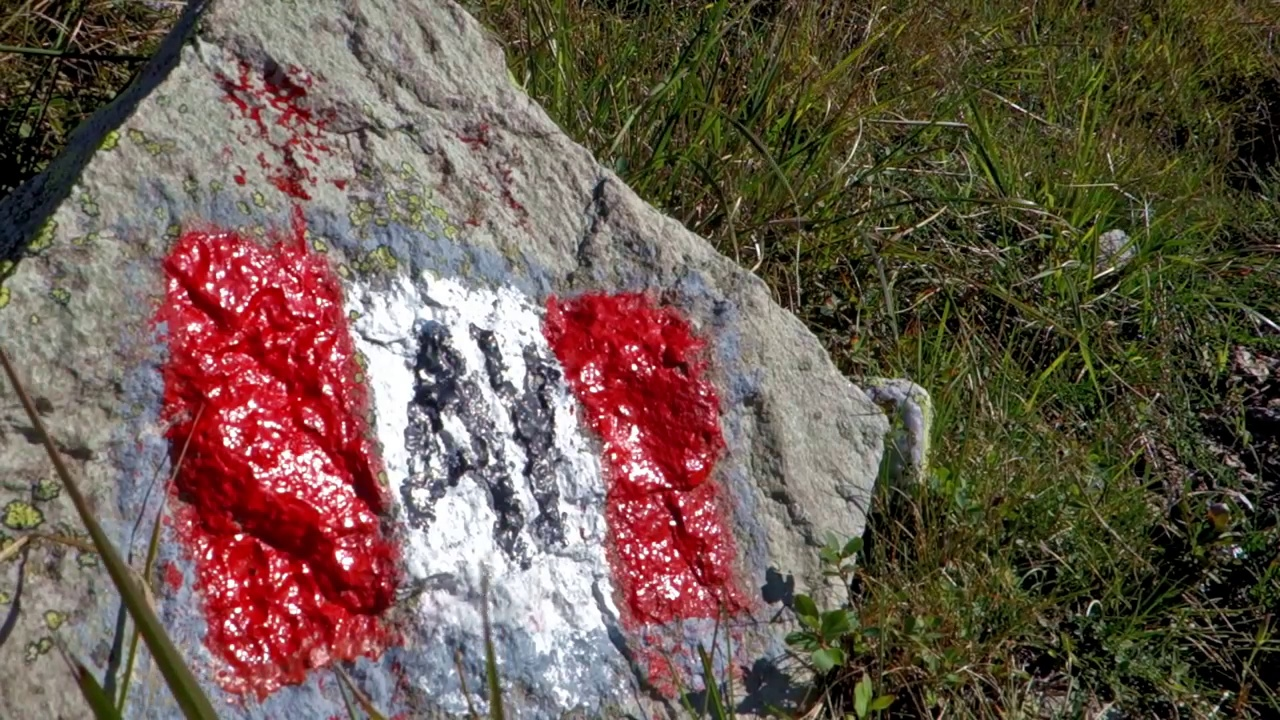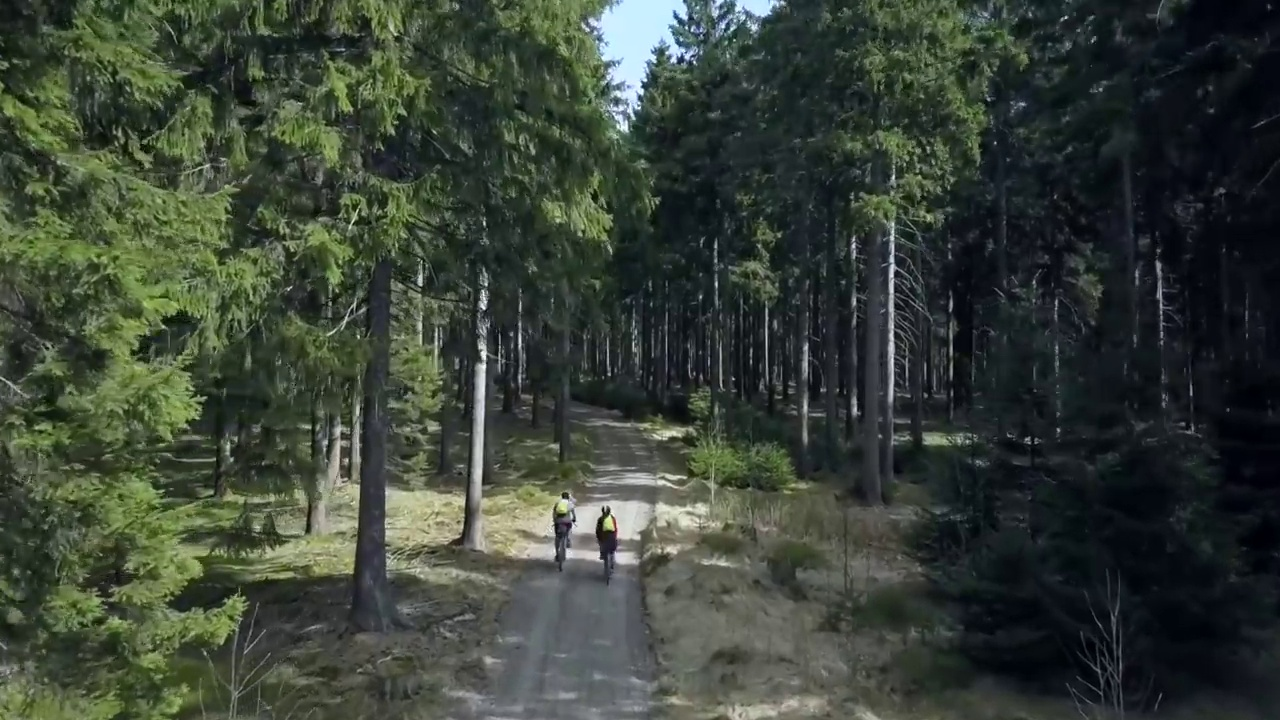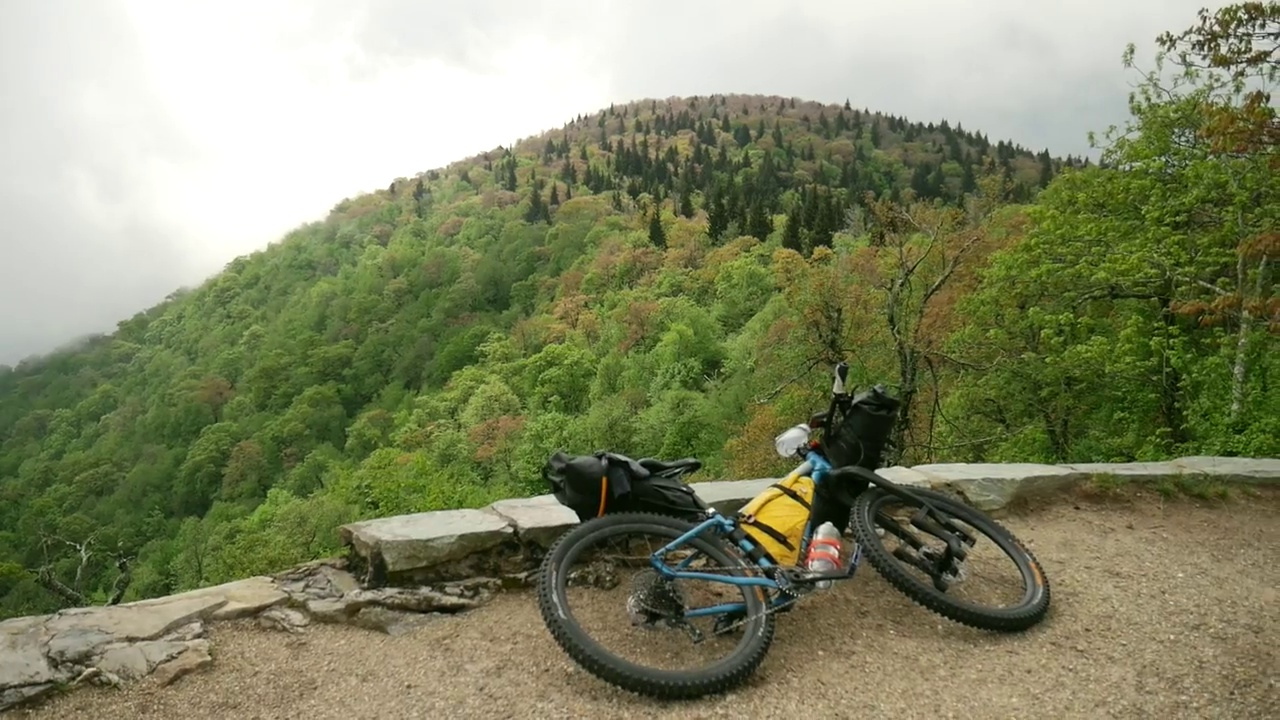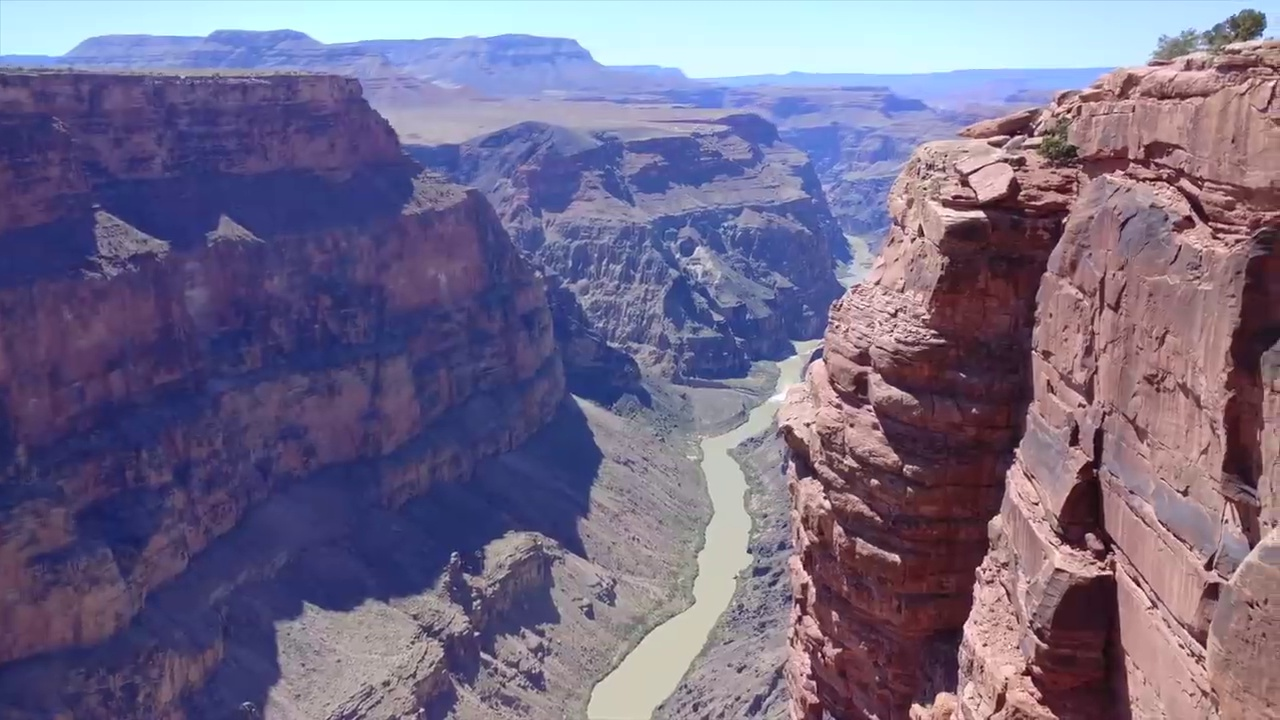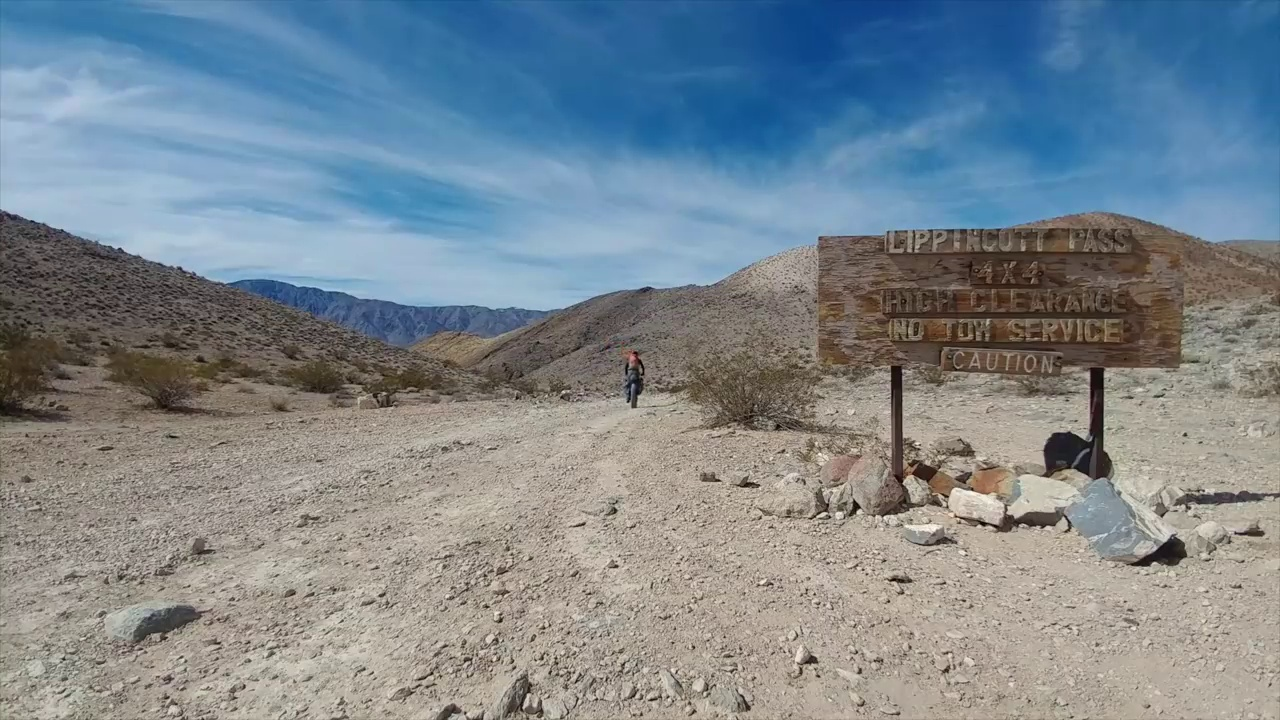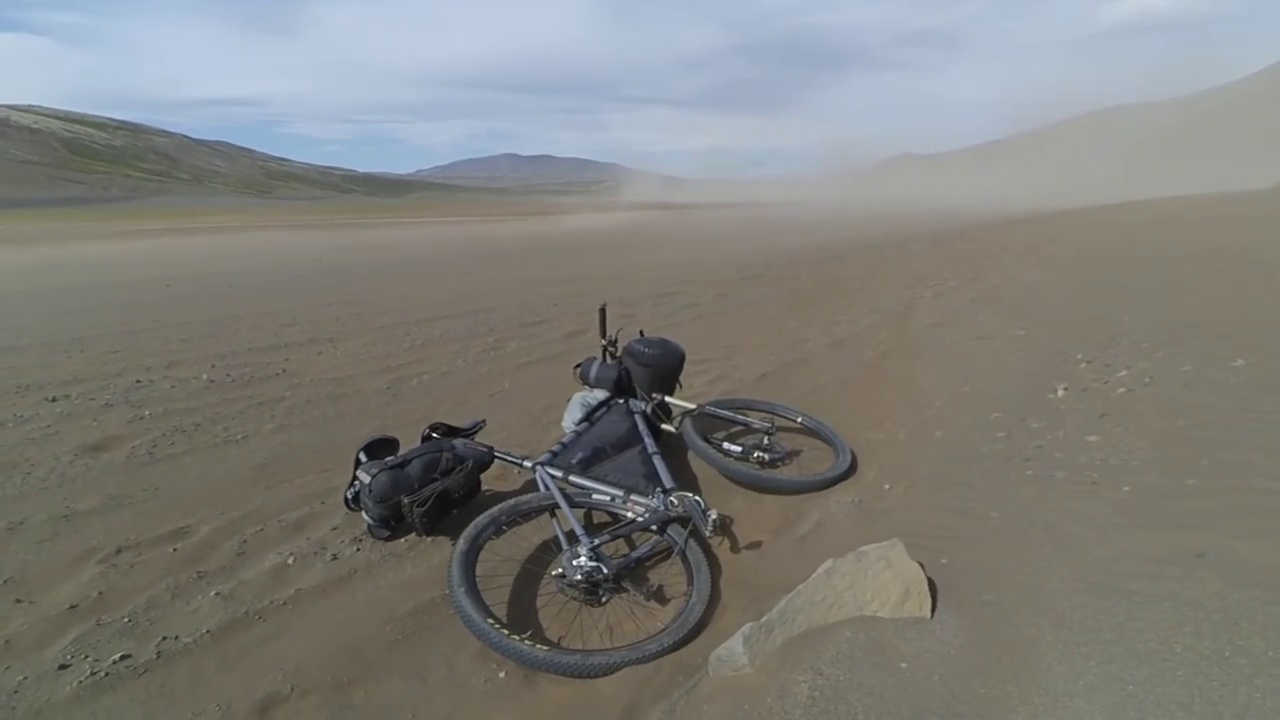Bikepacking Routes or Rides range from short overnight cycling adventures to a few weeks or months. The path to go bikepacking is increasingly popular among all types of runners. Bikepacking is the way to go for a detour of the world or even the whole off-road adventure. With the help of specialized bikepacking bags tightly pressed to the frame, bikepacking allows you to carry things. Also, at the same time, go to your favorite trail.
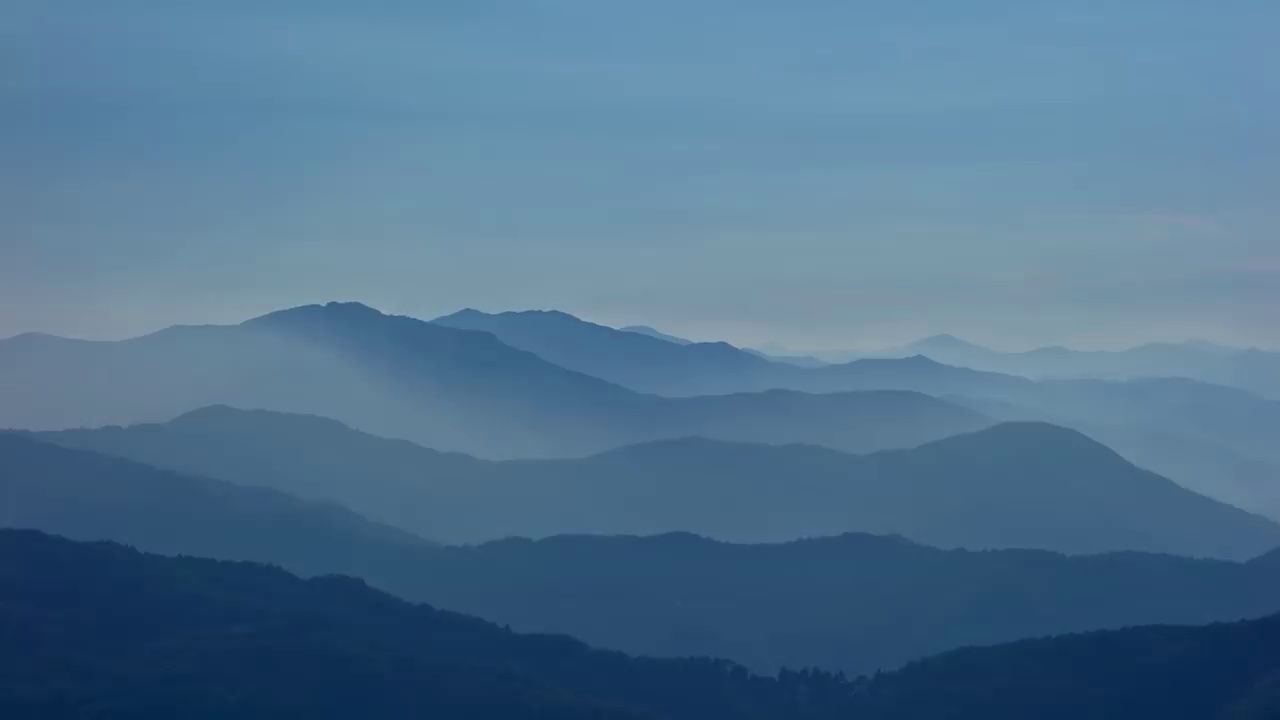
A large part of the cycling industry recently adopted bikepacking as the next big thing. Bikepacking is one of the buzzwords. Nonetheless, the term was already for at least four decades. Bikepacking denotes an off-road mountain bike ride, which contains the essence of a backpack, but biking, whether on trails or dirt roads.
For decades, different associations supported the bike-touring community, the development of roads, the crossing network in the US, and the creation of new detailed maps of the routes. Nonetheless, sometimes, without the emphasis on bikepacking.
A growing number of bikepackers embark on long trips to areas that are often less visited. This fact causes problems with access. For example, some sections of the route of the Appalachian Trail (perhaps the longest hiking trail in the country) are not for bikepackers. That means bikepackers are not looking for the same experience tourists seek.
Many bikepackers attempt multiday treks in search of something different. For example, solitude, inspiring journeys through the wild, relaxation from the urban bustle, exploration, beautiful scenery, and personal challenges. But this fact eludes the broader outdoor community, and some land managers create a stumbling block for access in some places.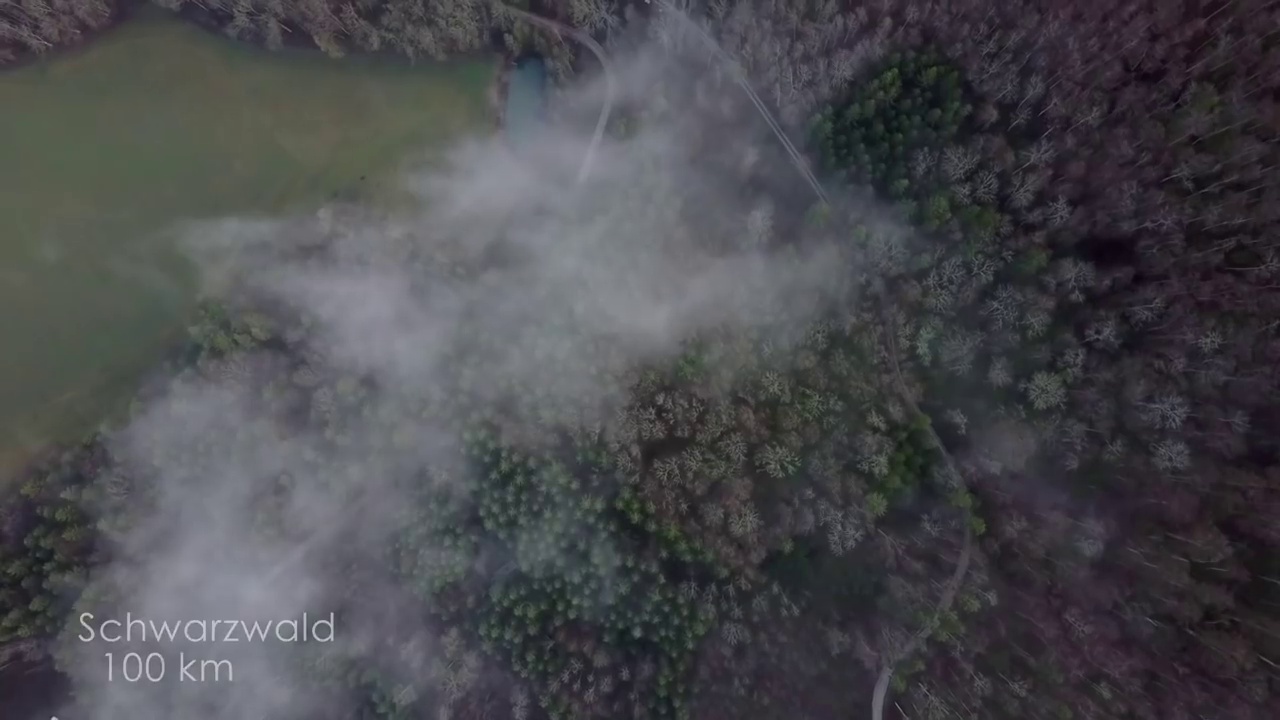
What distinguishes this new wave of bikepacking is a specialized team that developed and promoted long-distance cycling routes. Bikepacking is a lightweight, multiday bike tour, mostly on dirt roads or trails for cross-country skiing. Lightweight is an element of the response to the demands of riding on such terrains.
How to Approach Your Bikepacking Trip
More experienced bikepackers would recommend starting with a one-night-and-back round trip. Don’t be too ambitious because your first visit will invariably involve a lot of stops to adjust settings. You will find changing the bags, tightening the straps, changing the seat post height, or re-arranging the weight distribution.
Remember to get everything you need to survive on your bike. Pitch a tent, drink lots of water, stretch, and ride home the next day. Another way of planning your first bikepacking trip is to create a “base camp” from which you can make a day a walk around the neighborhood.
Again, choose an achievable goal for camping where you can drive in a day and camp. Then, the next day, lay heavy gears and shredded the trails, returning to the center the second night. In the morning, out and back. Make sure to account for the height change and the reliability of the approach, and do not cover so much that you can’t complete the journey the next day. To sum up, master the skills required before hitting the road.
Route Planning
Perhaps the essential question in any bikepacking trip is where you will sleep. This fact is where the importance of logistics comes from. A vast area of public land is available for bikepacking in the USA. There are many types: national forests, national parks, wildlife sanctuaries, and the status state land, among others. Places have different rules for camping.
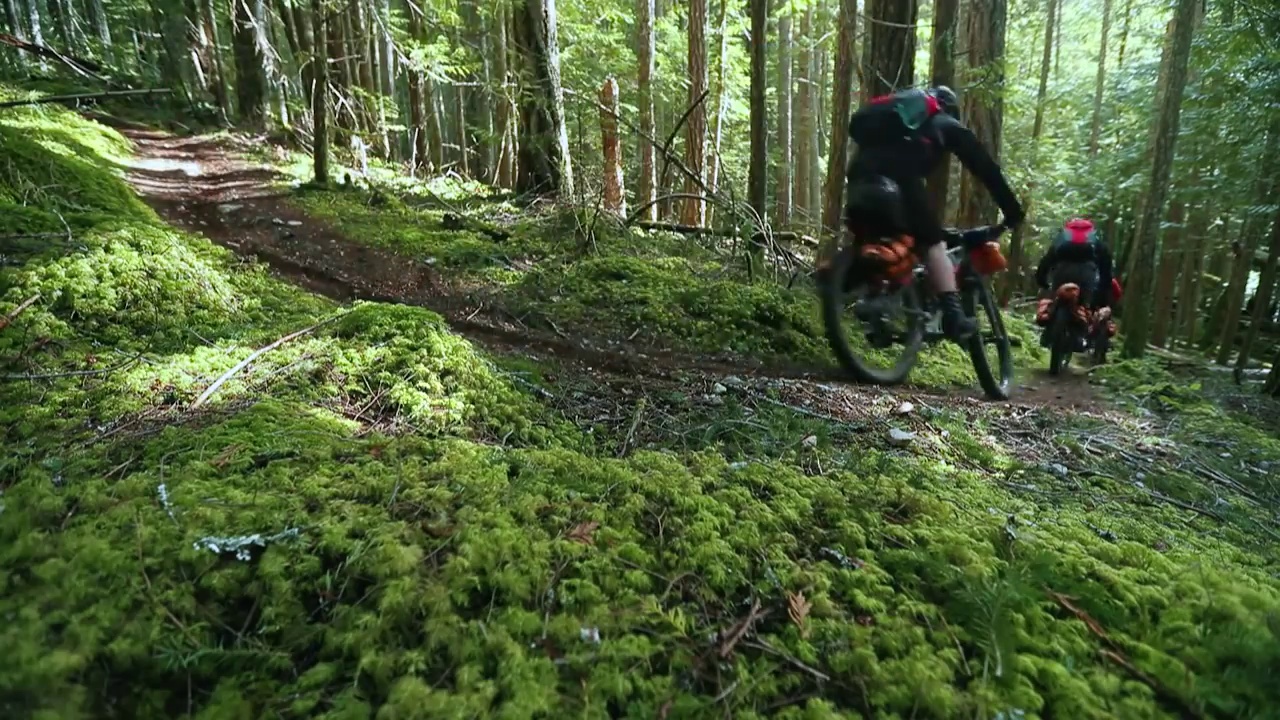
Loops are paths that begin and end in one place and are popular because it reduces the amount of planning you need. You cannot forget about the food supply. There are small eateries in many established routes, especially those that run historical places. You can replenish your food and drinks in shops or service centers.
Specialized bikepacking bags
The chances are that your bike is more than able to go bikepacking. Additional features and comfort of a full suspension setup can help on bikepacking routes. In a bikepacking trip, weight and space-saving are critical variables.
Understand weight and compact bikepacking philosophy before you go to the bike shop to get the latest bikepacking-specific, ultra-light, gravel-grinding stuff.
Bikepacking Accessories You Should Have
Bikepacking is a blend of cycling and camping. Bikepackers usually travel long distances, with a whole team of travel directly on the bike. Of course, you need to know what accessories to take and what fits on your bike. This fact can be painful on a bikepacking trip, especially when you have to prepare for any situation on the road. You want to travel light, but not enough to forget an essential element.
https://www.youtube.com/watch?v=Hn8QXbWZLtU
Helmet
You probably see bikepackers and people on routes riding a bike without a helmet. It is never a bad idea to wear a helmet. With how far technology has come to a mask in comfort, ventilation, and style, there aren’t many reasons not to use them. This fact is especially actual with bikepacking, as you are off-road. The chances of coming off the bike are higher than in other disciplines. A helmet with a visor is handy for keeping the sun’s bright light in the eye.
Wheel and Tire Size
If you mount a mountain bike, there are numerous options—for example, 27. 5, 29, and 29x wheels. Many mountain bikers insist that 29 wheels are more efficient for longer trips, while others prefer 27.5. The wheels affect speed, reaction, and agility.
Tire wheel size can affect the way the bike handles the terrain you ride. Most bikes have a standard-size road wheel that is 700C. Some bicycle manufacturers have long gone into building road bikes with 650b wheels. Small wheels allow you to use wider tires for a more comfortable ride.
Some mountain bikes can fit plus-size tires ranging from about 2.5 to 3cm in width. This can benefit bikepacking fields, such as sand, mud, or rocky roads and trails. Massive fat bike tires measuring 3.7 to 5 inches. Those tires provide excellent traction in sand or snow. Moreover, the tires can only mitigate a singletrack trail, so you don’t need front and rear suspension.
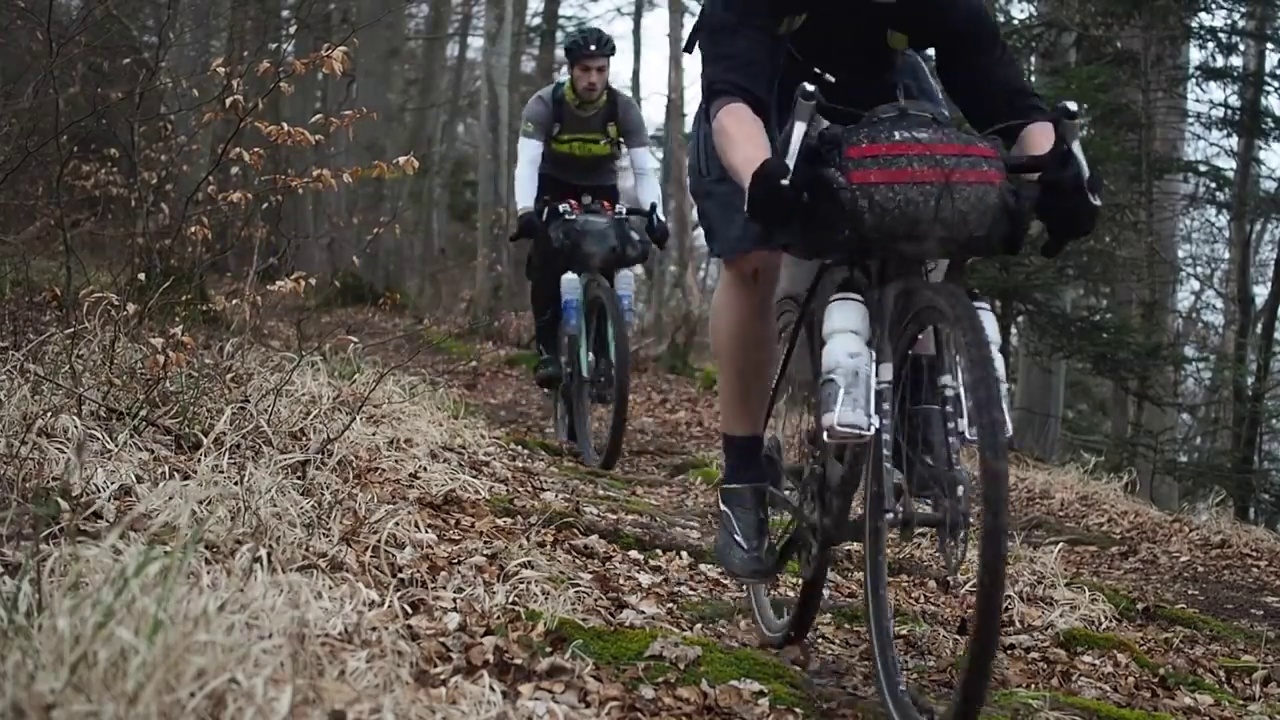
There are pros and cons for every size; many of them come down to personal preference. Many bikepackers choose to put wider wheels on the bike because wider tires give extra comfort. However, remember that wider wheels add weight and can feel more inactive than the more narrow ones. Also, before you set wide tires on your bike, you may need to research to ensure that your bike has enough room to fit the tires without rubbing the frame.
MSR pocket-rocket
This is for you if you are on a lightweight and minimalist bikepacking trip. Pocket rocket OPS 2 is a camping stove for bikepacking. Versatile and durable, you can use it anywhere, and it can last for years with proper care and maintenance.
This device is ultra-light, small, and perfect for outdoor recreation. Also, the fuel container sells separately. It boils quickly in minutes. It is easy to set up and perfect for bikepackers who are always on the go.
Bianchi Impulso Allroad
Bianchi has an impressive range of road bikes. Allroad is a brand in the rapid growth category of bike adventure. Bianchi has a triple hydroformed aluminum frame. The frame provides the impetus with equal parts, lightweight and stiff, while the gravel carbon fork on the front panel has a place for 40C tires.
The change of momentum comes courtesy of a reliable Shimano 105 group, which complements by assembly drawings, hydraulic disc brakes, and oversized rotors 160mm. The Allroad comes with tubeless tires Kenda.
Cooking Set
Kitchen utensils are not necessary to put in a bikepacking gear list. But if we’re talking about a bikepacking route, you probably will want to experience more authentic cuisine. Or you may want to boil water for coffee in the morning.
Because of the lightweight components, cookware for ultralight backpacking is very relevant for bikepacking. However, even ultralight pots, bowls, and cups can be challenging to pack. You can wrap it quickly in a backpack but not in a bikepacking frame bag.
Wheel Size
What is the bike for bikepacking? It is a difficult question to answer, but it is decisive. Reliability is a primary criterion for any cycle used for bikepacking and one of the reasons why rigid steel bikes have increased in popularity in recent years. For mountain bikes, there are three different wheel sizes available. 29-inch wheels roll much better on steep terrain and come in standard and large sizes with wide tires up to 3 inches.
Suspension
The suspension of the bike’s absorber helps the driver maneuver the potholes and obstacles. Types of rest may vary in number. For example, complex or rigid. Hard bikes have little or no rest. With less weight, they have fewer components and maintenance; therefore, it is pretty straightforward. Wooden bikes are perfect for smooth, non-technical trails like pavement and dirt roads.
However, fat bikes have wider tires instead of suspension to cushion the rider from bumps, And you can use them for technical singletrack. A suspension fork is only on the front wheel. An excellent suspension fork can have complete rigidity.
https://www.youtube.com/watch?v=63mEOK4wnRw
Rigid bikes are perfect for travel on gravel roads, forest roads, double track, and singletrack. But the front suspension gives you enough freedom to solve singletrack more smoothly than, for example, a fat bike. Front fork and rear shock in complete suspension bikes are perfect for technical trails full of obstacles, such as single tracks and steep climbs. Consequently, they are more costly and difficult to clean.
Working suspension adds a lot of facilities for travel but can finish your trip if things go wrong. Moreover, finding parts in remote areas is very difficult. Using large tires and tubeless tire configuration allows for much more pressure tires, so the suspension is not necessarily what you need for comfort and handling.
Bars
There are two models of bars, flat or riser bars, which are particularly suitable for bikepacking. Some bars may seem a little unconventional, but they provide a larger space for connecting bags, GPS devices, cameras, and light. Those offer many hand positions to keep you comfortable and in control during a long day of riding on different terrains.
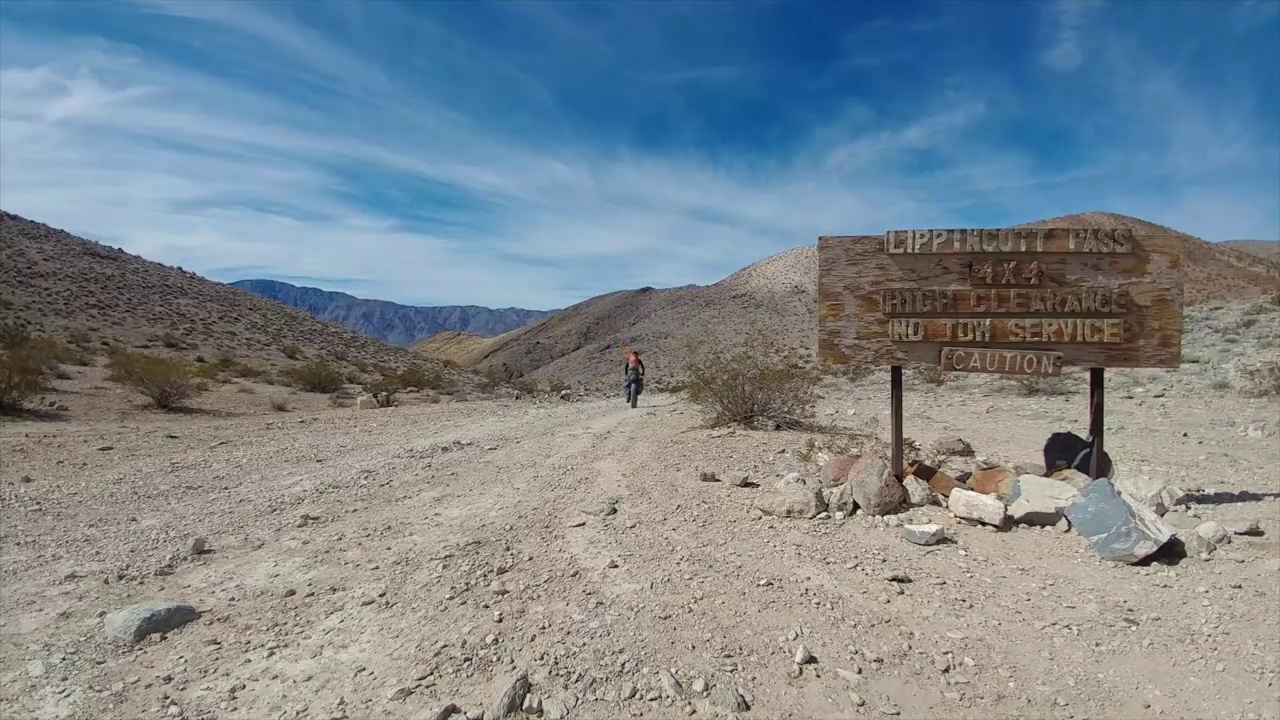
Some hard bike forks come with two or four sets of models, which allow adding cells at the division to carry additional bags. The gravel bike is the latest addition to bikepacking, suitable for less rugged terrain and long expeditions. Usually, they come with drop bars and 700C wheels with the possibility of off-road driving and are ideal for trails with a good number of roads and gravel or forest tracks.
Disc Brakes
Disc brakes are the key to the success of a bikepacking adventure. Mechanical disc brakes don’t have enough strength and precision like the hydraulic system, but cable replacement is much easier than hydraulic ones. They are reducing things that can go wrong, causing the elimination of the front derailleur.
Panniers or Bags
Using panniers or bikepacking bags depends on how you want the tour. Most round-the-world cyclists still opt for a traditional four suitcases. A fully loaded bike can take you to distant places and mount on various surfaces, from paved paths to dirt roads to steep mountain passes. The great thing is that bike adventurers have more opportunities today than ever.
Bikepacking Shoes
Bikepacking adventures can be challenging on your feet. Riding more hours than usual for a few days in a row can make the soles of the feet ache if the shoes are too stiff and not too flexible. The weight of the loaded bike often leads to more trails, lifts, and footwear with minimal bending, which often causes blisters. Shoes that get wet take a few days to dry, adding discomfort.
Bikepacking Trip
This form of cycling increased dramatically in recent years due to the bikes and equipment designed specifically for this driving. Bikepacking combines aspects of hiking and cycling to allow drivers to cover varied terrain on a cycle.
A bikepacking trip can usually last a single day or a few days. Bikepacking in the countryside requires special attention to training and logistics in advance to ensure a fun and successful experience. A bikepacking trip deviates from the traditional mountain bike rules of the road. Moreover, mixing things up and exploring new territory is a great way.
Bikepacking Maintenance
Concerns about the reliability of a bikepacking bike are essential. Nonetheless, the reality is that most bikepacking trips are less than 500 km, if not less than 200. If your motorcycle can survive a week without catastrophic failures, it is necessary to rethink how to care for your machine.
The key to keeping your bike rolling during the trip is periodic maintenance and complete bike inspection before departure. If you do not have comprehensive day-to-day care, you must focus on tires and wheels before flying your motorcycle for a long journey in the wilderness.
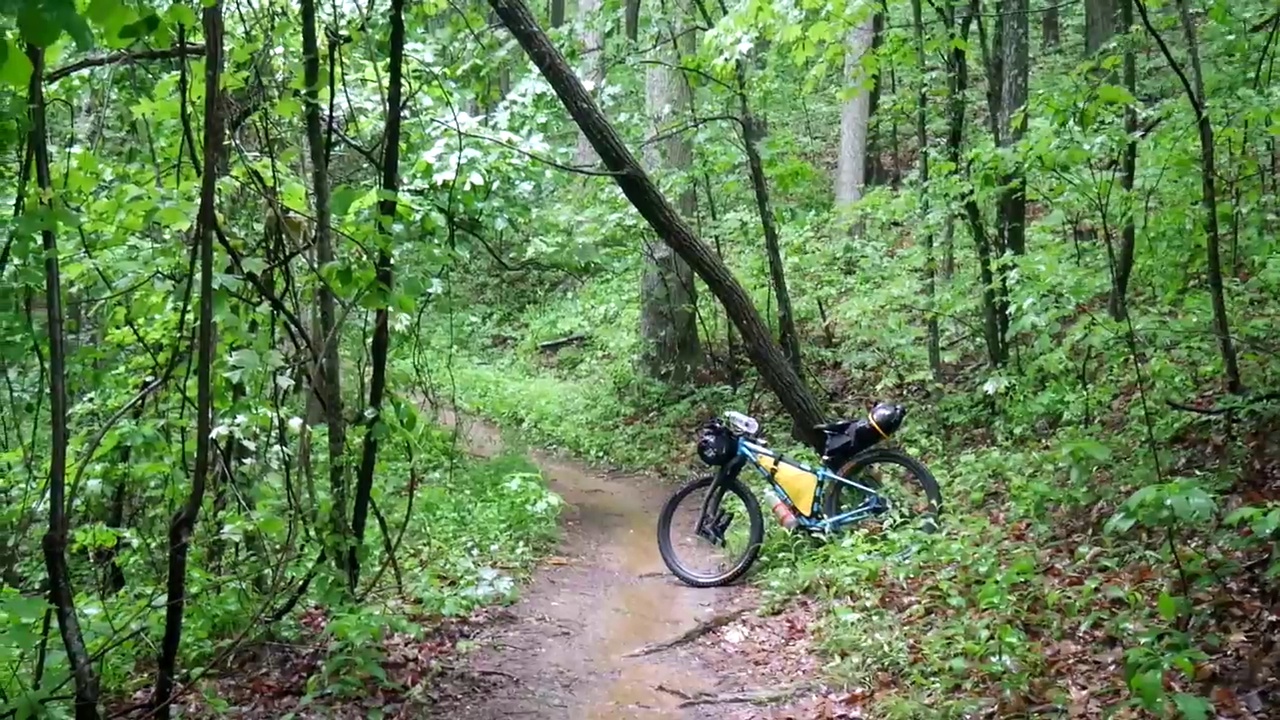
First Time Packing
Before heading out on a multiday adventure, upload your bikepacking bags and go bikepacking. Even if you bike around the city, it will let you know how your loaded bike feels.
You can make adjustments before embarking on an incredible journey. Please give it a test run, and do not over-packing. It is ubiquitous for new bikepackers to carry too many things. It is better to bring as fewer items as possible.
Each trip is slightly different, so the packaging can always be a bit of a mystery. Nonetheless, with some experience, you will be better able to determine what you do and don’t need.
For max-packing and weight adjustment, get similar to ultra-light backpackers, bikepackers often look for ways to reduce weight and save space. To get some ideas, to google about ultralight backpacking main article.
How to Pack
Bikepacking is fun and full of adventure to explore the outdoors. With all you need for one or more nights packed securely in your bike, you can quickly get to places that would be a day’s walk away. Bikepacking requires strategically thinking about where everything goes and being smart about weight distribution. A loaded bike will never manage as well as one with nothing extra. However, when you pack well, you will find that you can successfully navigate through rough terrain and have fun doing it.
You can put lightweight, bulky items in the package and place them on the wheel. Overhead of packets can adversely affect the handling of your bike. Many bikepackers put clothes, sleeping bags, sleeping mats, and tents in the steering wheel package.
Do not place heavy objects in the package. Instead, put it more in the frame. Items such as a furnace, fuel, bicycle tubes, food, and other bulky items within the package keep a low center of gravity of your bike to help keep you control the bike. Keep frequently used items within reach. Things like snacks, water, maps, and a cell phone can be better on the stem bags, where you can quickly get to them.
Bikepacking Luggage
Bikepacking is about the freedom to get on your bike and see the world from two wheels. You have many bikepacking bags, travel bags, and accessories in many stores to ride where you want. Also, you have handbags for every occasion. Check also 100% waterproof, expedition, lightweight, versatile bags. If you are thinking of going the extra mile, look at different kinds of bikepacking bags and outdoor stuff.
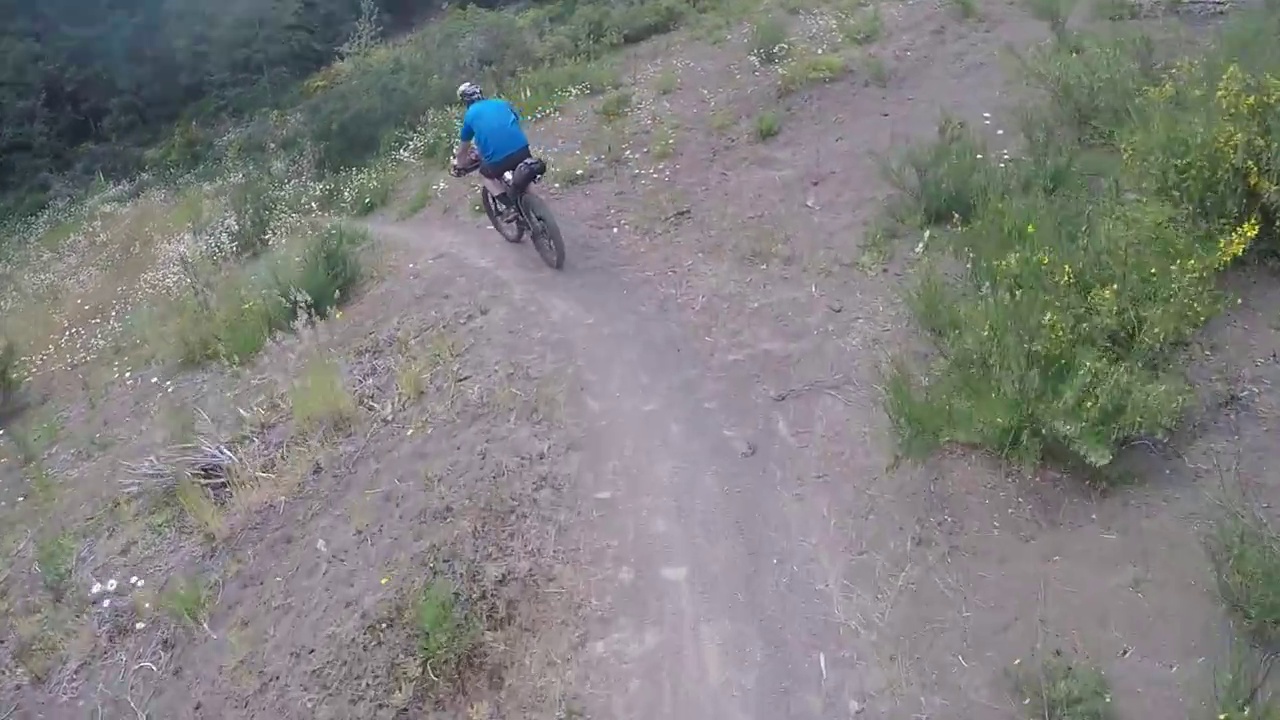
Racks and bags used for the tours are not stable on the bike, so bikepacking bags are designed to fit in the narrow box and are associated with a higher point in the pipe. Manufacturers use lighter, more durable elements to satisfy requirements, but it also means that the equipment can be more expensive. Packing things requires some strategy, so most people stick to the essentials, neatly folded and orderly in a modest pocket.
Terrain Types and Bike Selection
Gravel roads, forest roads, double tracks, gravel bikes, and rigid mountain bikes are good options. Rigid or hardtail mountain bikes are more substantial than gravel bikes but provide maximum comfort and stability in fast, loose, and rocky descents. A mountain bike with a front suspension fork will smooth your journey and make navigating the roots and rocks easier. Also, if you are going to be mainly in technical singletrack, a complete suspension mountain bike is the right choice. A fat bike is another option. Wide tires help soften the ride without the added complexity of the suspension.
If you are strict on the pavement on mixed surfaces like asphalt and dirt roads, a touring bike might work, but as soon as you hit dirt roads, a cyclocross bike, gravel bike, or rigid mountain bike is more secure. You will enjoy a cushier ride and better traction. Gravel bikes handle loose, gravel, and fast descents more stable than road bikes. The fully rigid mountain bike is more massive and slower, but it might be a good option if you spend most of your time on dirt roads.
Daily Distances & Speed
Bikepackers tend to cover from 40 to 120 km per day. This distance is significantly shorter than typical road cyclists. The speed at which you drive will depend on terrain, climate, the bike you ride, the amount of equipment you wear, how you feel on a particular day, and many other factors. However, most people can cover approximately 13 kilometers per hour on average. You can expect 80 km by bike for about 6 to 7 hours.
Multiday Backcountry Ride
Wear enough warm clothes, tents, stoves, sleeping bags, water filters, and days’ worth of food in a backpack or bicycle bag. There are innovations in lightweight camping equipment to make multiday bikepacking adventures more realistic than ever. Nonetheless, you still need to know how to pack for the trip. A list of bikepacking gear is a process of trial and error. The only way to learn about the optimal configuration is to spend a night on a local adventure and find out what you need.
One of the biggest problems in preparing for several days of traveling by bike is knowing how much food to bring. If the adventure takes you to more populated areas, you need less food as you can buy food on the road. Also, it would be best if you planned the outputs of each meal and snack. How you will be active by counting calories is essential, so make sure you take in the calories you burn. And remember, that load becomes more comfortable as you go, so pack more food than you need for your bikepacking trips.
How to Pack
Finding a pack for bikepacking is one of the most frequently asked questions regarding implementation. Because of the large variety of packing lists and configurations, there is no definitive “rule” about how to pack things. Your layout may vary depending on the design—for example, rigid or complete suspension—also personal preferences.
However, there are a few tips useful for the organization. Heavy objects should be as low as possible to keep the bike handle. Keep the weight low and back to increase comfort when grinding long miles in the saddle. Also, keep the items in the bag on the handlebars, gas tank bag, or upper part of the frame bag.
Pack Light
You don’t need the latest ultra-light gear, but the overall weight of your bike determines how hard it is to climb hills and how hard it is to control the descent. You will regret packing a full-sized camp stove, eggs, a huge tent, and lots of extra food when you face 1000 meters of elevation.
Again, you do not need to spend most of the money but be smart about what to carry and what to leave at home. You can save a large amount of weight which will be very important during your journey. Choose trim options when you have them, like a pocket stove.
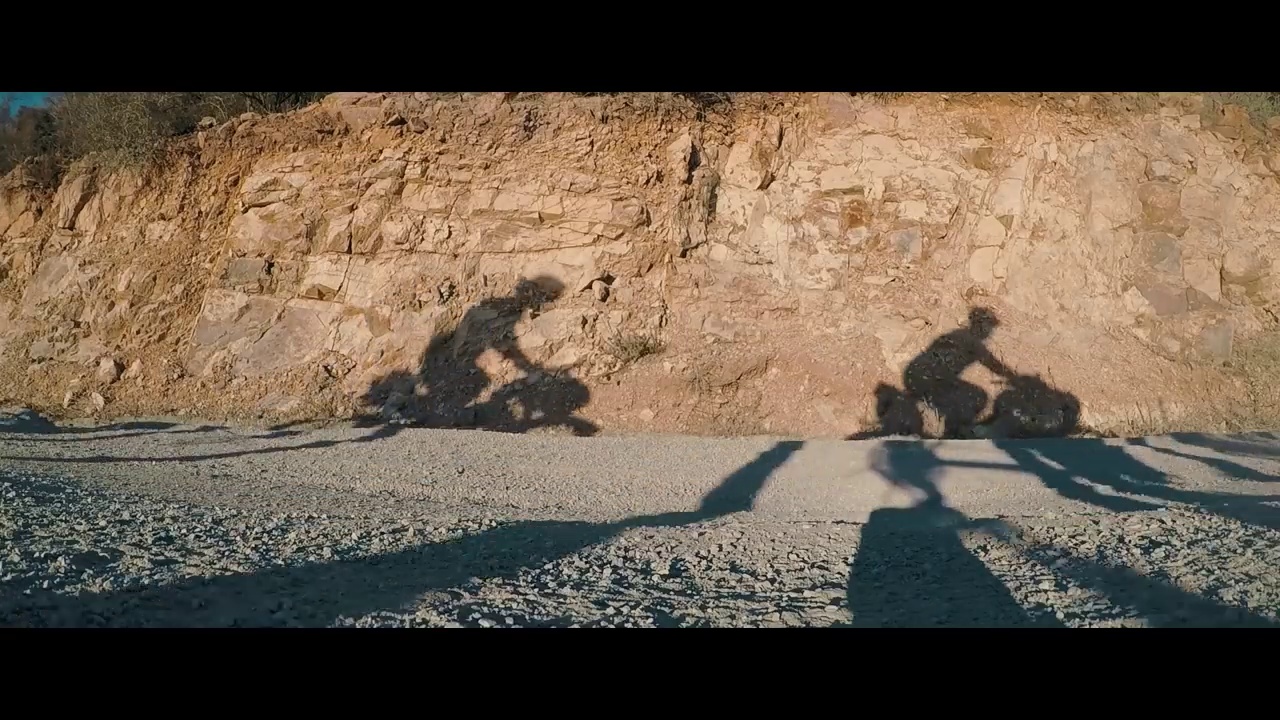
Gear Carrying Options
Bikepackers carry the same equipment as backpackers in addition to replacing tools and bike tubes. Fortunately, you have more space for a bike. Unlike hiking, you don’t want to carry much weight on the back. In contrast, most of the burden should be positioned as low as possible on the bike. You can ignore saddlebags because the width makes them easily damaged on narrow paths. You can attach a tent to the handlebar and food boxes in the backward direction on the rear part of the upper portion of the tube. Experiment to see what installation works better.
Routes and maps
A GPS device like a Garmin eTrex 20 or similar means roaming around a bit, looking at exciting things, and then returning to a pre-planned route to get to certain places. An easy way to do it is using a GPS unit loaded with maps and GPX files for the roads. Or, you can always use a smartphone instead of a GPS device such as Garmin. Both apps allow you to download maps offline, meaning you don’t need a mobile data connection to use them.
You will realize your limitations as a pilot, so try to avoid Windows and be a little more strategic in planning the routes. GPX files are beneficial, especially when connecting ICT with the default route, which is new for you as a pilot.
Create a GPS Track
If you’re comfortable orienteering with a compass and paper maps, there’s no reason you can’t go walking in your way. Nonetheless, many bikepackers prefer to travel with a smartphone or GPS device to assist with finding routes. A GPS Navigator is beneficial for showing its position and recording the road on the fly, but perhaps even more helpful is the ability to load a route on the device before you leave the house. This option allows you to follow step by step as you travel.
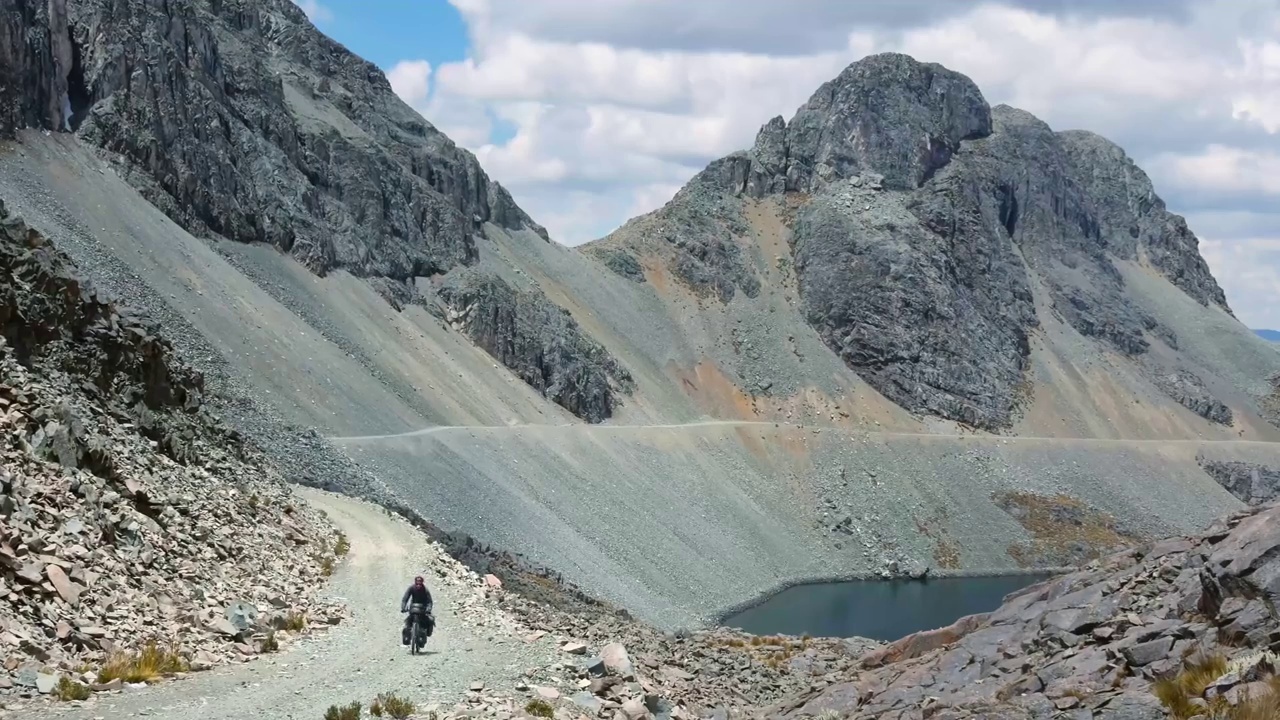
To load the route in your smartphone or GPS device, you have to create a GPX file based on all the research you did to find the paths and roads you want to travel. You can do this by using various online tools. Ride with GPS, fats, and a bike map are three popular bike-specific options that are pretty simple. Drag points on the map to create a route, and when finished, download the GPX file and upload it to your smartphone or handheld GPS device.
Water Storage
Water is the most crucial element to trip planning for any bikepacker. Critical logistics are how to store, where, and how much you can fit on your bike. The maximum amount of water that any person may carry on the bike is probably in the range of liters, which is a ton of weight. This fact interrupts your enjoyment of the journey. You can store water by attaching it to the lower end or below the bottom tube into the bottle cage. Also, you can use something like rock bags. A hydration pack makes a great overflow. Attachment plugs are rare but very useful for storing water.
Hybrid Bikes
Most hybrid bikes provide front suspension to clear minor irregularities, but some are rigid. Hybrid bikes also have the name cross bikes, but that term is no longer used to avoid confusion with cyclocross bicycles.
Hybrid bikes initially provided the advantages of road bikes and mountain bikes. Large, padded seats and handlebars give a comfortable position for riding. You can go on paved roads, but they are not as easy and efficient as road bikes.
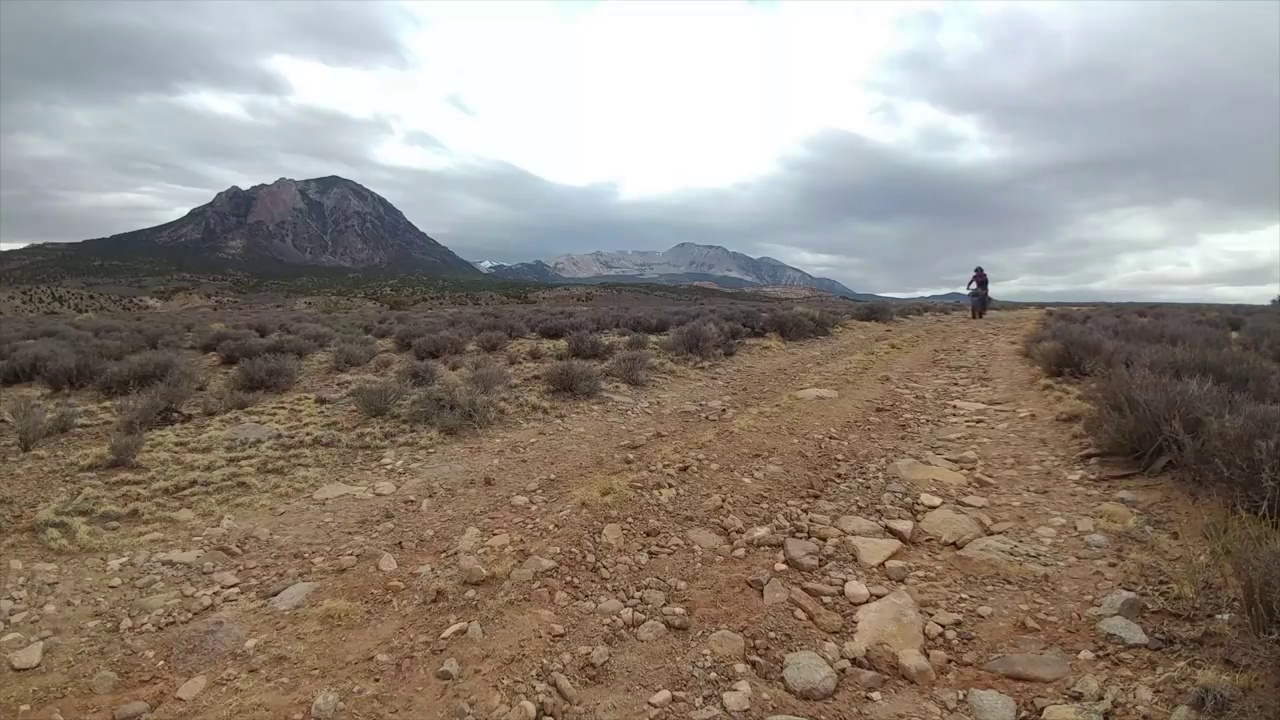
Also, they are ideal for paved or unpaved bike trails but unsuitable for riding off-road. Tires, as a rule, the average width with a smooth tread, provide a reasonably smooth ride on the pavement and enough grip and cushion on unpaved tracks.
Bikes for Routes
Suspension and wide tires are better for challenging terrains. Also, in the winter, you might prefer fat bikes with studded tires. The newest models tend to be more accommodating to bikepacking bags. In particular, suitcases in the midsection area. Also, there are extra mounts for water bottles, and contains more vertical position is better for long days in the saddle.
Bike for Trail-Worthiness
How do you know if your bike is trail worthy? If you bought a bike at a bike shop and regularly rode on the highway with no mechanical issues, you probably are in good shape. If you purchased a bike elsewhere than a bike retailer specializing in bikes, your chances are not so high.
The bikes at many sporting and department stores are cheap and do not last long. Before going into the field or sinking a large amount of money on expensive upgrades, you could have to be sure that your bike is for bikepacking.
Department store mountain bikes are not a very good option. However, many high-quality mountain bike shops don’t offer bikepacking bikes. To be more likely to enjoy the experience, you need to know about the nuances that set a potential bikepacking gear apart from the rest.
Folding Bikes
Folding bikes are ideal for those who want to keep the cycle in a boat or plane or live in tiny apartments with little storage space. They are also suitable for travelers who wish to take the bike on the bus or train during the trip or do not have a safe place to Park the bike at work. Most folding bikes have small wheels, making the cycle a little less efficient and more complex than the standard bike, but most fans believe that the advantages outweigh the disadvantages.
Recumbent Bikes
Recumbent Bikes have a reclined driving position and a more traditional look from the late 1800s. However, for reasons such as higher costs, very few people are interested in riding on them, including most people who like to travel ultra-distance.
Some breeds, such as the transcontinental race, do not allow recumbent bicycles. In other races, such as the Trans Am bike race, riders sometimes use recumbent bikes, but not all fight for victory.
Cruiser Bikes
Cruiser bicycles are comparable to hybrid bikes in that they are for everyday driving. Also, they have a very comfortable, upright riding position and broader and more comfortable seats. Moreover, they often have a lot of balloon tires and a more vertical steering wheel. In some cases, they drag backward compared to hybrid bikes.
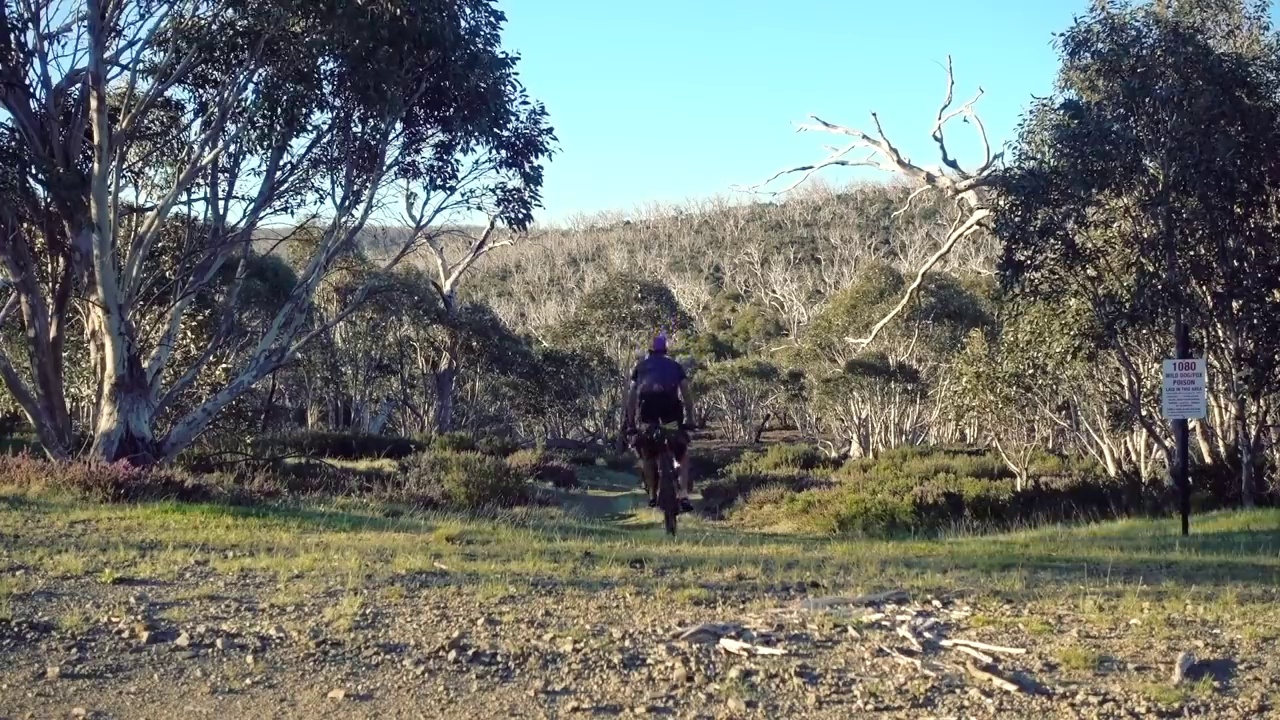
Most cruiser bikes are single-speed or high-speed, and the old-fashioned coaster brake where you pedal backward to stop. If your journey is relatively flat, you can use them for short-distance trips and procedures. Some cruiser bike manufacturers have a variety of colorful patterns available to fit the fashion tastes of any bike lover.
Types of Bikepacking
Bikepacking offers many new opportunities, especially for sports cyclists who like to ride fast. In any case, traveling without racks brings a sense of adventure. The ease with which a frameless bike can move on terrain and the high speed that gives a chance on the pavement expands your possibilities. With different types of bikes, gravel racers, mountain bikes, racing bikes, or fat bikes, bikepacking provides a different touring experience.
Scottish Hill Tracks Book
The Scottish hill tracks book is an excellent resource for finding new routes for bikepacking. The book divides into 24 pieces and features a network of paths, old roads, and paths that crisscross the mountain country of Scotland from the border of Caithness.
The website path heritage features ancient routes, often suitable for bikepacking as Roman roads, drove roads, pilgrimage routes, mining roads, trade routes, military roads, and shieling paths.
Evaluating your Bike for Trail
You have to be sure that your bike will be ok after the conversion for bikepacking. So how do you know if a motorcycle is on trail worthy? You are probably in good shape if you buy a bike at a bike shop and regularly ride on a single track with few mechanical problems.
Contrarily, if you buy a bike in a place other than a specialty retailer, your chances are not high. Bikes that sell in many sporting goods and department stores are cheap. Department stores are not a very good option for buying a motorcycle. Nonetheless, many high-quality bikes are not suitable for bikepacking.
Your bike does not have to meet all the bikepacking criteria to work well, but you will enjoy the experience better. Evaluate your bike trail worthiness before biking or expending more money on upgrades. There is a certain reliability standard that not all bikes meet. Off-road riding is hard for the cycle, and many low-cost, entry-level mountain bikes are more for casual riding.
How to Plan Your Bikepacking Route
Bikepacking is adventure fifty percent and route planning fifty percent. A few decades ago, paper maps were the primary tool for navigation, but in the digital age, we have smartphones, smartwatches, and other GPS devices at our disposal.
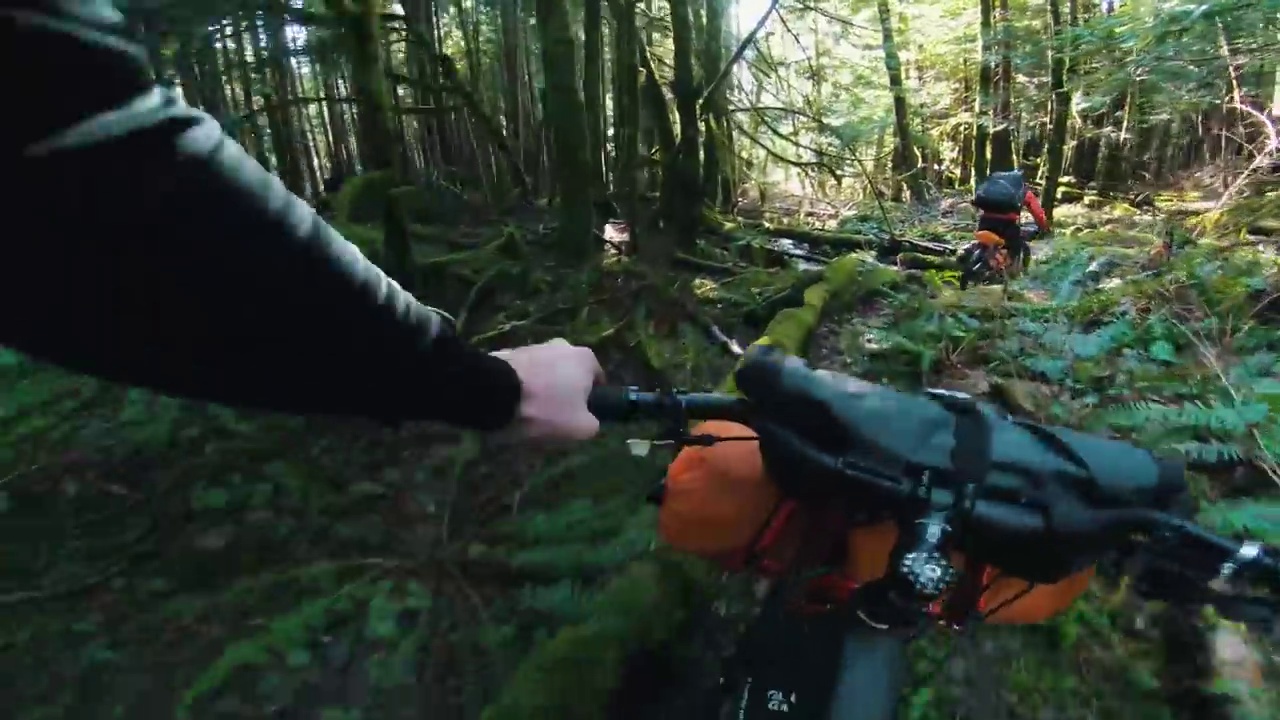
You now have websites and forums for information on how to get started with the purpose of a bikepacking route. Experienced riders consider bikepacking an art and even create their maps. Road planning a bikepacking journey can be challenging without knowing where to start and what available tools are.
Training
First, think about the journey you want to complete. Terrain, mileage, and even the weather will affect how to prepare for the trip. One of the most significant features of a multiday bike tour is the distance volume. After a day of riding in rugged terrain, your body can take a toll. Add little by little in back-to-back days and mileage for each trip to increase muscular endurance and ability to recover.
In contrast to the formation of road and mountain bike racing, you should focus not on speed but on maintaining the resistance within a few days or weeks. Train your system to stay in the aerobic zone. Traditionally, bikepacking routes cover hilly terrain, so develop the leg muscles you need for climbing.
Keep in mind that your bike will be with more weight, so a good idea is to gradually add weight as you increase your mileage to help your body to adapt to carrying the extra weight. The excess weight will help you adjust your driving style and how to upload and download with different additional weights. It would be best if you acquainted yourself with your bike in other conditions. Stay focused on endurance and leg strength to get the best results.
Traveling with Kids
Bikepacking opens up a new set of options for camping bikepacking with kids because you can travel in all but the most technical trails. With tag-a-long, the child can pedal or coast even when they do not have an excellent ability to cycle. Also, they can ask many questions while you’re sniffling and grunting, trying to get up the hill.
It’s a good idea for parents and children to wear backpacks that can carry water, food, and extra clothing to compensate for losses from the store on bicycles. The biggest drawback of tag-a-long is stability. Since everything is interconnected, the whole bike wants to lean when the child bends or turns to look at something. It takes some time to get used to a long-term swing that comes with the tag. The first time your child pedals uphill to help you get that extra energy that causes the vibrations of the sentence.
Trail-Tested Backpacking Food
A good backpack of food for breakfast consists of about half no-cook and half quick cooking. Don’t forget to bring liquid flavors like hot chocolate. The last important feature of backpacking food is what you like. On long trips, especially, food is essential for psychological well-being. Half of the bag’s load may be in the diet on a journey of two or more weeks. Excellent estimates of the amount of food 1. 5 to 2 pounds per person per day.
To save weight, you have two options. First, freeze-dried food is the most comfortable option, or you can eat it luxuriously but more expensive. Dehydrated food like cereals, pasta, bread, potatoes, etc., are already dehydrated. You can also buy dried fruits and vegetables. It takes time, but it is easy. If you’re serious about backpacking, getting a food dehydrator is well worth the small investment.
Dried beans can add variety to your dinner. You can eat dried fruits separately or add them to breakfast. Food for backpacking needs to be packaged and organized to balance weight. Food and menus can quickly become the most complex and time-consuming part of trip planning.
You can save a lot of problems in the field by measuring and packaging individual meals in plastic bags. Get rid of cardboard boxes. Also, add labels with cooking instructions. Try to have a flexible system of organization—for example, dinners into one bag and breakfasts into another container. Finally, you can match the food situation to decide on the fly when you use a no-cook vs-cooked breakfast and not rummage in the bags for the label.
Calories and energy
Bikepacking takes an incredible amount of energy. As an anecdote, long trips are a great weight-loss plan. Biking needs food to supply your body with roughly 2,500 to 5,000 calories daily. Probably a lower figure for summer and higher for cold weather.
A good backpack, fast food, and short-term energy are carbohydrates, starches, and sugar, such as bread, cereals, pasta, crackers, and the like. Also, it would be best to have long-term energy from proteins and fats, such as meat, cheese, egg powder, dry milk, cheddar cheese, chocolate, and nuts.
Micro-Adventures
The enterprising British author Alastair Humphreys popularized the term “micro-adventure.” A micro adventure is a short adventure in the open air, so you don’t have to be an expert on survival or sport pro. Anyone can do micro experiences in everyday life. The micro-adventure is currently the most common form of bikepacking and is comparable with classical short trips—for example, a weekend trip to the city.
How to Plan a Bikepacking Route
Whether a weekend or a month for free, a bikepacking trip along the trails or distant forest roads may be just what you need to satisfy your craving for adventure; nonetheless, before you pack up and roll, putting a plan in place is worth the effort. A plan will help you make the most of your time on the road and obtain an unforgettable experience.
Think about the time, distance, region, climate, and where you want to go. Also, use maps, guides, websites, and word of mouth to find paths and trails you can ride. Put the route on your smartphone or portable GPS device. When you return home, think about what worked and didn’t so you can plan the best adventure for next time.
Continental Divide
The continental divide is a theoretical line that separates watersheds that flow into the Atlantic Ocean from those that drain into the Pacific ocean. There is a hiking trail called the continental divide national Scenic Trail, which follows a line of miles from Canada to Mexico, but its way is too tricky for biking. The Continental Divide is one of the longest routes for cycling. About 90 percent of the Great Division passes on dirt and gravel roads, most of them through public lands.
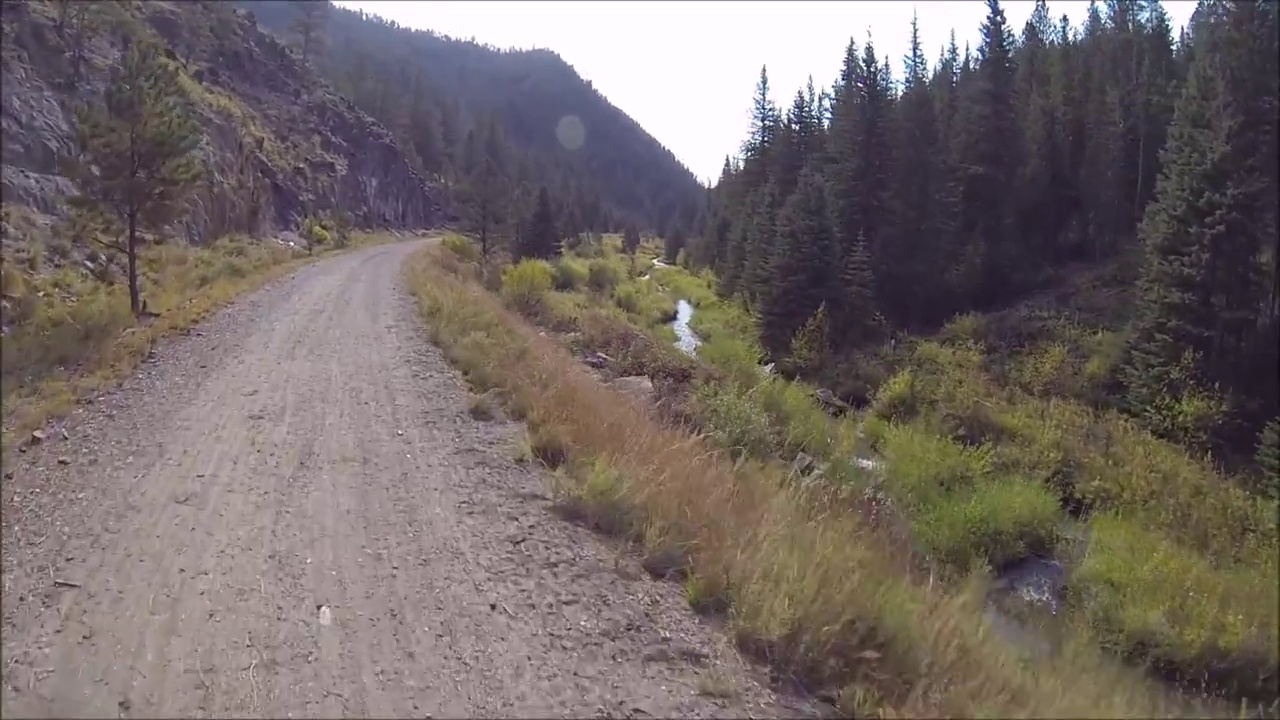
This historic trail is about 3000 kilometers, passing through the Rocky Mountains from Canada to Mexico, and there are at least two ways to complete the route. The most popular way to travel is to follow the tour route gap or excellent divide mountain bike route from Banff, Alberta. This route differs from the continental divide trail and consists mainly of gravel roads that cross the current divide.
The annual race is the Continental Divide tour, a testing ground for bikepackers worldwide. Nonetheless, the Continental Divide Trail passes through many wilderness areas that do not allow biking. This fact is much more complicated because of the track conditions, extreme elevation changes, and distance. In many places, roads are weak or do not exist.
The Great Divide
You can jump in the saddle and pedal 1000 miles, a solo journey along the spine of North America. Starting in southern Wyoming, you will head South through Colorado and wind in the Northern part of New Mexico a month later.
Eastern Divide
The East Divide is epic on the East coast as a bikepacking route. Also, it rivals the continental divide. Moreover, the famous Appalachian Trail is not legal by bike, so a little ingenuity is required to create this route.
The Arizona Trail
The Arizona Trail AZT is a one-mile route stretching from Mexico’s border to Utah through deserts, mountains, and canyons. This adventure path includes several fantastic mountains biking at some points.
The Arizona trail is 800 km from the scenic route, which crosses Arizona vertically from a terminal on the North to the Stateline campground on the Utah border and South parts of the Coronado national monument on the border with Mexico.
Routes in Idaho
Idaho is a small niche in bikepacking, but it is growing. The West-Central part of Idaho encourages drivers to explore unpaved roads and trails with new bikepacking routes. For example, you can go bikepacking down cascades in 60 to 180 miles.
Colorado Trail
It is possible to get a bike from Denver to Durango or vice-versa via the Colorado Trail. Nonetheless, the bicycle cannot enter any of the six natural areas along the road. In its place, you will have to go around forest roads. With that said, the Colorado Trail is perfect. This trail is one of the best bikepacking trips in the United States. Undoubtedly, the combination of great height, length, and formality.
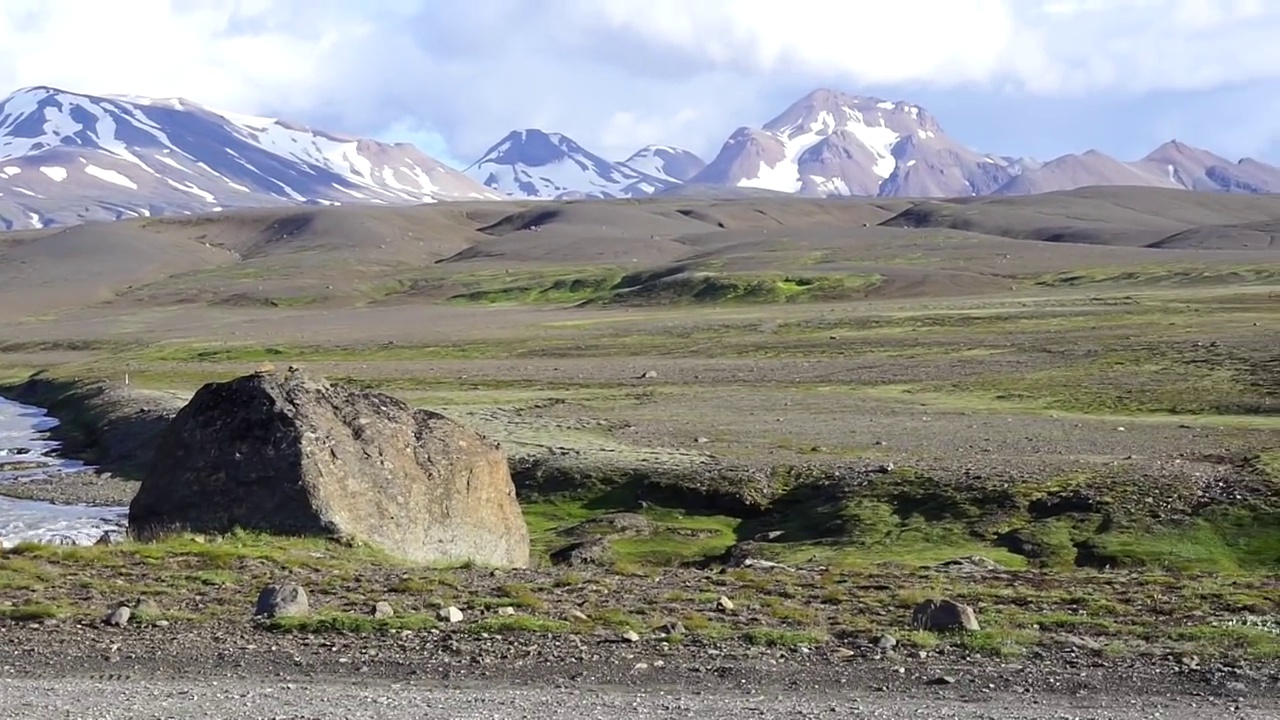
Pilots of all types of fitness levels can be successful in Colorado Trail. You can hike on the Colorado Trail Race on rocky trails with your bike loaded. Make sure your knees, hips, hands, and every part of your body can handle pushing a heavy mountain bike. The Colorado Trail has an average altitude of over 10,000 meters.
The Colorado Trail is rough, so riders use rigid bikes, single-speed, big wheels, or small wheels made from carbon, steel, and aluminum. Please ensure you are happy on the bike you choose to travel and that it is in excellent working condition. Also, ensure that your bags are waterproof, light, and durable.
You may need to order the bag frame if you have a suspension bike. An easy setup does not provide significant protection in the pouring rain or the unexpected cold. A system with more stability weighs more. The only way to know compromises is to test different equipment in the journey. If you’re new to bikepacking, it is better to err on comfort. But if you spend a few nights on the road and have a good knowledge of your tolerance for cold and sleepless nights, you might find that a small set can adapt well to your needs.
The story is that there are options that are light and comfortable. Sometimes it can rain all day, so do not skimp on your rain gear. Use a breathable jacket and pants, preferably a pair suitable for cycling. Also, it is a good idea to use waterproof gloves and socks. In late summer, monsoonal thunderstorms can be imminent. Waterproof reflective gloves and socks are helpful. If you’re new to bikepacking, preparing a year or two in advance is a good idea.
Because of the nature of the track, I plan to hike for a couple of hours per day on the Colorado Trail. The CT is a beautiful route, but you sometimes need to lift to get to those places. Don’t bring your ultra-stiff racing shoes and find shoes you can walk for hours. Of course, a GPS will save you the pedaling distance. The Colorado Trail is a Paradise on earth.
Rising of Trails
The number of cyclists riding for several days on trails like the Colorado Trail, the great divide mountain road bike, and other less-known routes is steadily climbing. In the great divide mountain road bike, you see thousands of bikepackers during the year. The Arizona Trail Association is actively catering to cyclists and bikepackers as one of the main groups of users.
In Arizona, it is now impossible to pass a weekend riding without joining paths with a rider on a fully loaded mountain bike. With the fast-growing popularity of bikepacking, the demand for new routes in all parts went up.
The bikepacking community has a history of developing and exchanging multiday routes on your own link existing trails and dirt roads. Some see many passengers yearly, like the stagecoach 400 in southern California, the 250 Coconino in Arizona, and the Huracan 300 in Florida.
But most of these routes tend to be just a couple of days, and the riding experience varies widely and can be very unpredictable.
Backcountry Trails in Montana
Access to spectacular backcountry trails in Montana, part of Idaho hot springs bikepacking route, stops with the designation of a new wilderness proposal in Oregon. The plan potentially protects hundreds of square kilometers of land in the remote wilderness. Nonetheless, that implies that there are only two bike-legal singletrack trails.
Bikepacking Near Boulder
Bikepacking, you can get to all the places in Boulder from the city center. However, you want to choose the route that suits your fitness level and time. Boulder, Colorado, is a hotspot for cycling, great racing, mountain biking, and everything else. Finding a place to camp near the city can be confusing. Large volumes of car traffic can make planning a bikepacking trip near a boulder difficult, especially if you are unfamiliar with the area. Wherever you go, don’t leave trash.
Los Padres National Forest
Another excellent but also challenging bikepacking route is the national forest of Los Padres. This route is a physical and mental challenge because of the peculiarities of their different elevation through Alpine forests and remote areas of the track. This multiday bikepacking route is approximately 442 km, covers the most magnificent mountain range on the coast of California, and comprises 0% singletrack, 0% dirt road, and 20% asphalt.
The best time during the year to visit is spring because it is not too hot, but it’s also the best time to see the scenery. GPS is necessary since it can be tough to navigate. Shorter routes are available if you don’t want to bike the entire journey.
Kenai Peninsula
There are easily accessible trails in the Chugach National Forest and combined form 83 miles of desert for singletrack riding. They connect with trails for bikepacking.
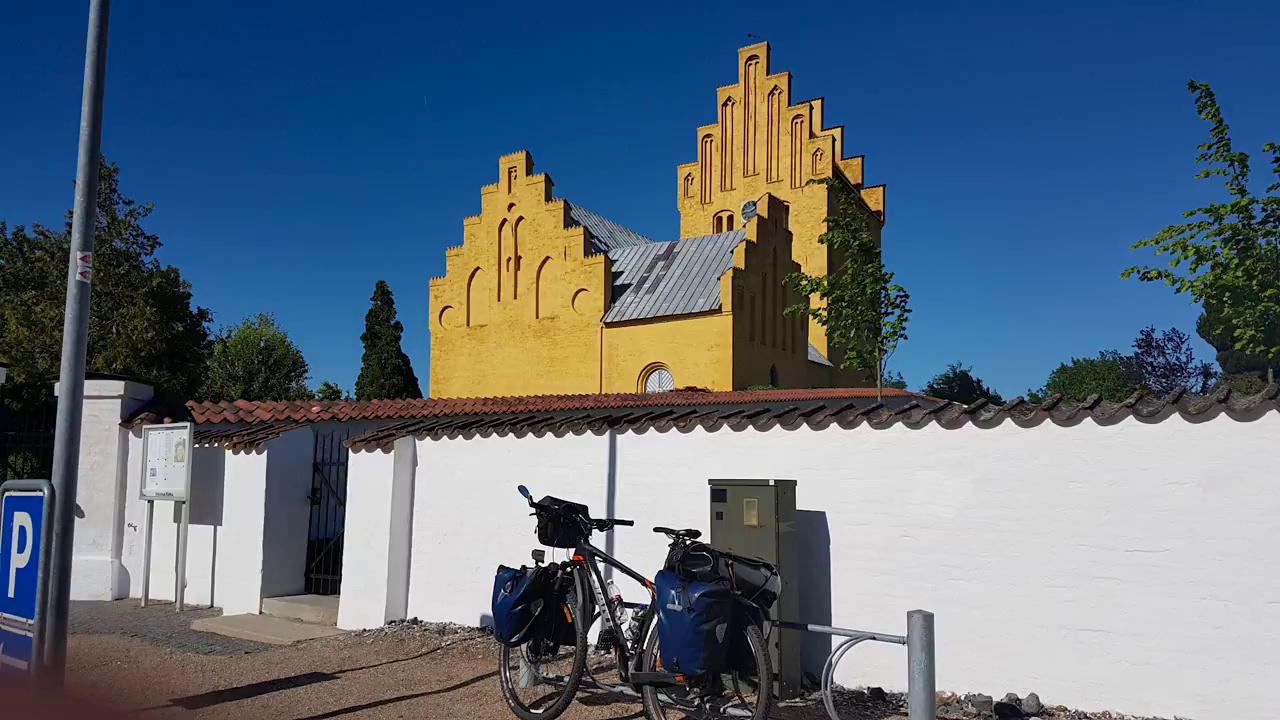
Turkey
Turkey has a rich history, exciting culture, delicious food, and a perfect climate for cycling. Turkish landscapes are very different. You can find authentic towns and villages to stay in almost all parts.
Hungary – Five vertices
Five vertices bikepacking Hungary is a multiday, self-supporting adventure bikepacking tour. In the course of the race, there are the highest mountains in Hungary from Budapest to Tokaj on asphalt and gravel roads. Although the height may not exceed 1000 meters, you can expect plenty of climbing and stunning views of the picturesque forest routes. You can take off in Budapest on Margit Sziget and finish in Tokai. On your way, you will cover about 500 miles and 9,000 feet of elevation gain peaks.
Scotland
Scotland’s adventure coast offers a stunning backdrop for bikepacking since it is a long-distance footpath. It is suitable for gravel and mountain bikes alike. Scotland has long-distance hiking trails, such as the tripartite lakes Cowal way and Kintyre way, near plots of cycling trails, such as the Caledonia way and West Loch Lomond cycleway. The views and experience of the remoteness of the Scottish Highlands is the perfect tie of miles. Moreover, a big climb-added requires above-average physical fitness and skills in handling the bike. Also, Reiver Raid is a new bikepacking route in the valley of the ale water in the Scottish borders.
European Bikepacking Routes
Europe is a great place to explore by bike. Between bike rides, you can eat good food, visit fascinating cultural and historical sites, and learn new languages. In Europe, there are trials for every interest and skill level.
There is an excellent amplitude of bikepacking opportunities in Europe, despite the lack of a single superstar route, such as the great divide route and the Colorado and Arizona way roads.
There are great bikepacking routes in many European countries, including Finland, Sweden, Norway, Iceland, Denmark, Austria, Portugal, Slovenia, Croatia, Romania, Bulgaria, Hungary, Serbia, Kosovo, Slovenia, Estonia, Latvia, Lithuania, Ukraine, Belarus, Russia, the Netherlands, and Luxembourg.
For example, the Red route is not one path through Poland but many short courses marked with painted blazes of other colors. The trails generally allow bikes to pass through cities, fields, and paved areas.
The Association of European Rambler plans to complete an international long-distance trail system of routes throughout Europe. Most of the courses assemble from pre-existing national and local trails. Each country can provide comprehensive resources in their native language through websites or reference books in the national trail systems.
You can find printed regional route maps in local tourist resorts. Also, commercial maps and guides may be available. Detailed work plans are also suitable for a wide range of navigation systems and often show more detail than a traditional road map in the United States.
It is also worth mentioning the network of EuroVelo cycle routes; EuroVelo routes are generally suitable for riding trekking, biking, hybrid or rigid mountain bike, and in some places, are not recommended for tires less than 40mm.
Adventures in the UK
Britain has beautiful wild places. There is an expanded system of mountain trails, forest trails, and old roads. Moreover, you can go on big or small adventures, local loops, or journeys.
Also, you can stay camping if your tent is light enough to mount on your bike. One of the most significant rewards of bikepacking is the possibility of camping along the way.
Kokopelli Trail
The Kokopelli’s Trail is a 142-mile trail in Colorado and Utah. It is a popular multiday bikepacking route with an intensive course around broken spokes, oceans of mud, and infinite height.
Algonquin Park
Algonquin Park is in southeastern Ontario. It is an old railway bike trail for the family during the spring, summer, and autumn. In winter, the path is a multi-purpose winter trail recreation. The route stretches from rock lake camping.
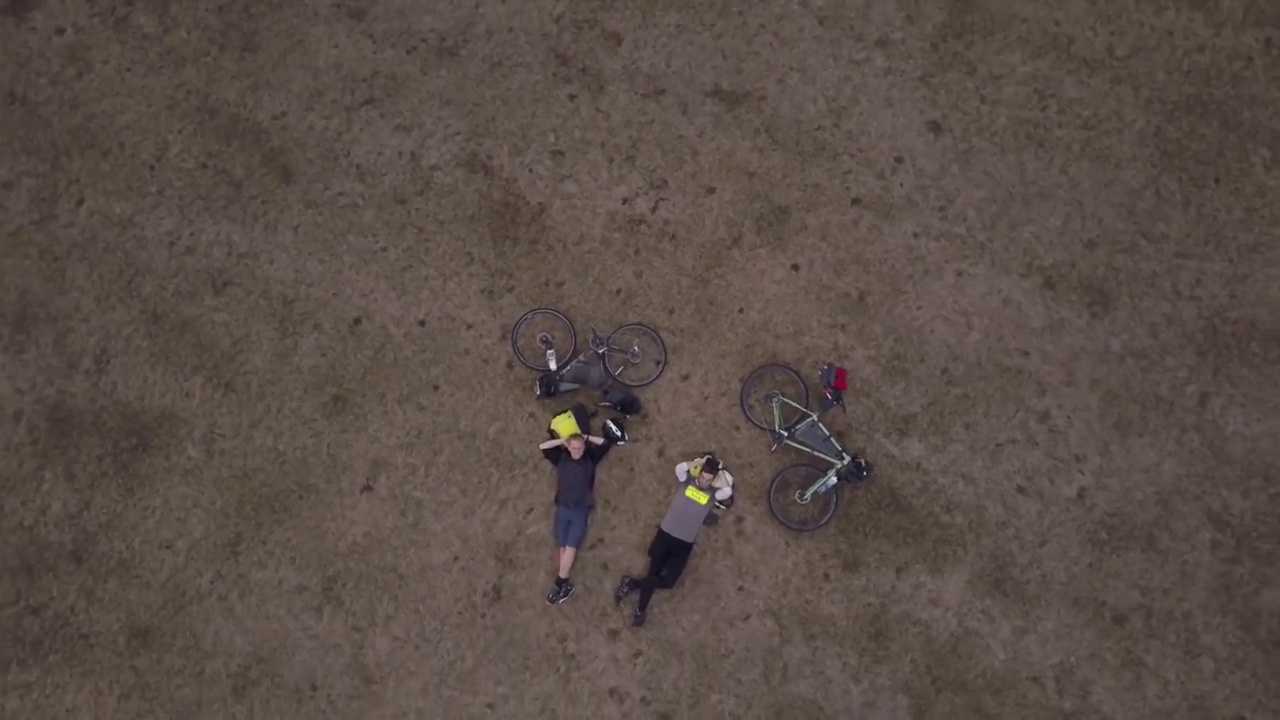
The Mining mountain bike trail is a rough mountain bike trail consisting of hills, sometimes muddy, ground full of rocks, roots, and obstacles, unsuitable for young children and not adults.
The Byers lake trail is a short bike 13 km route round trip with a moderate degree of complexity. You can access the East from the access point Kingscote.
Pinetown, South Africa
The bikepacking style in Pinetown is cross-country and downhill. The mileage is 15km, and the fashion is technical. The path’s not a walk, but if you are in South Africa, head to this private Park 17 km North-West of Durban and the Indian Ocean. You will shred berms, rock drops, and bridges and make fast, fun climbs. For example, the blue route is a ten-mile cycle, one of the country’s most popular attractions. The Park also has downhill and Enduro tracks to give your full suspension rig training.
Grand Canyon Tribal Park
In the landscape of rock and colors of the Grand Canyon desert is the little Colorado river tribal Park. This Park includes the Eastern edge of the Grand Canyon and natural beauty competing in several other places in the West.
The route could serve as the Arizona Trail mountain bike detour because the road crosses the Grand Canyon, forcing you to hire a shuttle service within the National Park or strap a bike and a pack for a mile to the opposite edge.
Oregon’s Deschutes River Trail
Oregon Deschutes river trail is a great place to start bikepacking. The path is secure, and the distance is about 12 km. The bonus tip for this adventure is that there are no cars, you can explore the old ruins of the estate of Harris, petroglyphs, and the wildflowers spring in abundance, salmon fishing, and amazing views of the Deschutes River canyon.
Ireland Atlantic Way
The Wild Atlantic way of Ireland is a long waterfront path, one of the longest in the world. Moving along the Western coast of Malin’s head, the country’s northernmost point to the West of cork, in the South. Bikepacking in Ireland is beautiful. You will see green fields, huge granite boulders, cliffs, surf, and meet friendly people. There you can drive 550 km from the shore without leaving Donegal. You will find dirt roads, sheep, ancient paths, and sand.
West Virginia Cranberry Backcountry
Northwest Virginia has hundreds of miles from Forest Service roads and trails. The Kennison mountain trail has cow pasture roads and the Pocahontas Trail. Also, the backcountry of the Tea Creek mountain trail and Bear pen road is a test of skill on a bike and off-road travel.
Combine sections of a single track with an infinite number of forest roads. You will feel the bliss of the racetrack long after the trip. A forest service road runs along the cranberry river, and you can reach it only on foot and on a bike.
East of the Rockies
While rocky mountains and the West coast have an excellent range of possibilities for long rides, there are also options in the Midwest and Eastern United States. For example, the mountains of North Georgia have excellent trails, forest roads, and paved roads. In particular, a route of 56,000 feet of ascent, moving from South Carolina to East of Clayton. The course includes gravel roads, trails, and some asphalt.
Moreover, there are several campgrounds and other services along the road despite the lack of cycling-specific paths. The covering is typically clay and crushed stone, but the good nature of the track makes it fun and an opportunity for families and novice cyclists.
Annapurna Bikepacking
Annapurna rises among the world’s largest. In Annapurna, you can climb the highest mountain on earth and destroy the bottom of a long continuous mountain downhill. The journey begins in Kathmandu, where your senses come alive. You can discover the charm of bikepacking with the pure pleasure of cycling.
You will have hot meals and comfortable accommodation in local tea houses along the road. You are packing your suit, warm clothes, and a small sleeping bag. The historic district of Manang and Mustang in the Sacred Valley is a must. Also, you can ride local trails and relax in the tropical area of Pokhara before flying back to Kathmandu on a small aircraft, with a view of the entire Himalayan range.
Minnesota
The only national forest in the Arrowhead region of northeastern Minnesota is a rival destination for bikepacking. More than 3 million hectares of land, water, rocks, and trees in the superior national forest, including the vast and remote boundary waters, canoe area, and wilderness. Eighty percent of trips are on unpaved gravel and dirt roads. You cannot bike in boundary waters, but canoe rentals and maps are available.
Flagstaff, Arizona
Flagstaff is the place for Northern Arizona University, which attracts young, outdoor-minded from all over the country who study in the city and experience the outdoors when the chance presents itself. Cycling, hiking, hunting, and golf are outdoor activities in Flagstaff. Outside the town of Flagstaff are a vast forest of pine trees, dirt roads, and trails. All of this makes for some of the most impressive bike trails.
There are several places around the flagpole where you can camp for free in a national forest. Then you can move South-West towards the nearby town of Williams. Dinner in Williams is a good idea. Make sure you fill your water bottles in the city, cycle close to the borough, and find a place to camp in the woods.
Feel free to camp in this place or any open national forest areas. After a good night’s rest, pack your camping load on the bike and walk the short distance back to Flagstaff, Arizona. Two days are quicker and more manageable than one day, so take your time, enjoy, and have fun.
Circuit Huascaran
The Cordillera Blanca route takes riders on two of the most scenic road that passes in the world. The Cordillera Blanca has more than a dozen heights exceeding 20,000 feet and almost 90 above 16,000 feet. Within this mountain range dominates the giant Huascaran neighbors at 22,205 feet. Circling this colossal peak and observing of life that occurs on each of its sides is stunning.
New England
If you look to drive long distances and don’t mind paved roads, the Adventure Cycling Association has a route that goes along the coast from Florida to Maine. There are a lot of unpaved roads in the valley of the Connecticut River, which can help connect the trails further North in New Hampshire. Also, check the maps of trails for snowmobiles. Camping is difficult. Given the camp’s layout, the distance across Crowell Nickerson, and the dunes, you can design a great route to Provincetown. The trail features a barn for impromptu camping.
Cascade, Idaho
The idea is to offer a mountain bike, gravel, cyclists, and bikepackers a shorter alternative to the tent as an adventure cycling loop, a 600-mile Idaho hot springs mountain bike route. If you don’t want to consume more than ten days, you can make the hot springs loop, go to the waterfall and take some rides from a central location during the week or weekend.
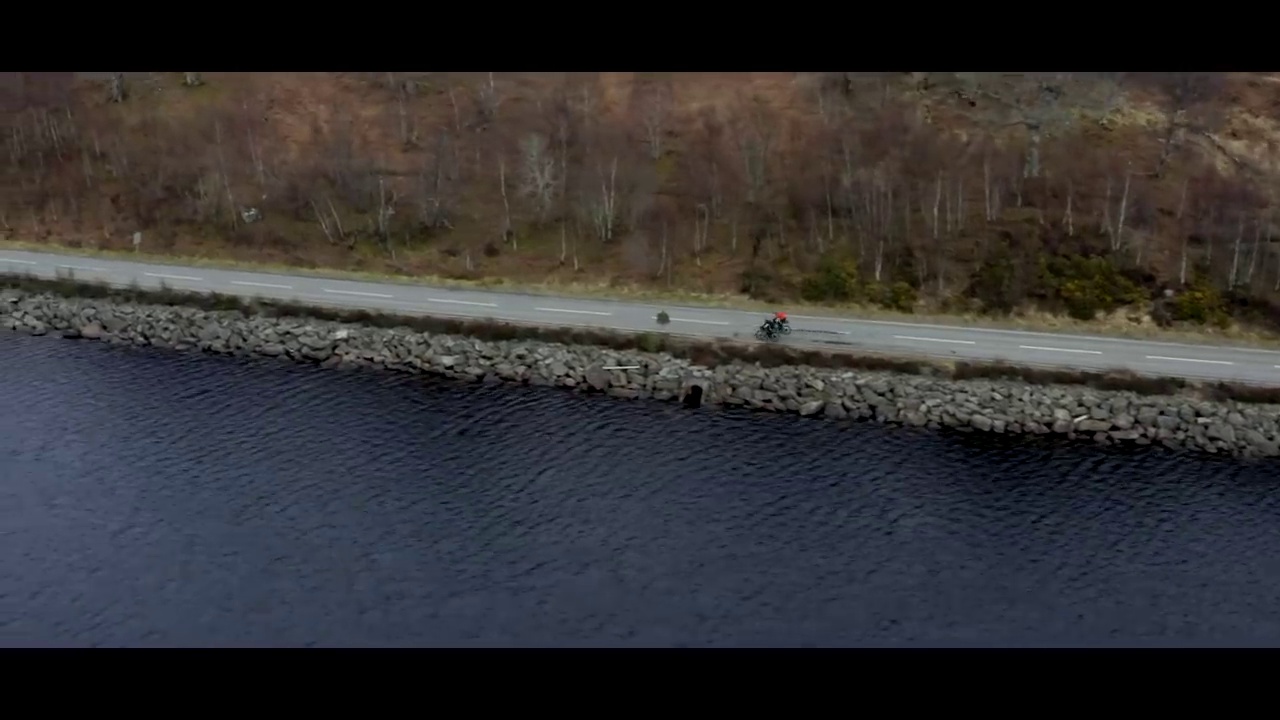
You can accept provisions in one of the local shops, camp at a nearby campsite, or even get a good hotel room and enjoy a shower with hot water and breakfast among the waves. Also, the waterfall and the surrounding area offer many services, including getting off the bike. For example, bird watching, hiking, fishing, soaking in one of the many hot springs to visit Kelly’s Whitewater Park or aquatic cascade center, or relaxing or swimming in the stream or lake. The city also has some great local restaurants, ranging from cozy food.
Southeast Asia Itinerary
If you plan a trip to South East Asia, you have made the right choice. Tourism in Southeast Asia is one of the things you can do. The region contributes more adventure than you can think. And, for the most part, incredibly cheap. How much time is needed to see Southeast Asia? As much as possible. You can spend all the time and will never get bored. It is possible to have a fantastic experience that lasts a few weeks or months. Your only task is to decide where to go and how long to spend in each place.
California Sierra Trail Race
The route passes through historic mining trails and roads century, slowly moving up to the foot and falling into Lake Tahoe. Then follows the Tahoe rim trail around the lake, over 100 miles from the California better singletree, before returning to Auburn miles and 70,000 feet altitude.
Seneca Rocks-Spruce Knob Recreation Area
This region has some of the most stunning wilds in the country. This route is one of those more remote places with fewer amenities but seemingly endless kilometers of dirt roads and trails in the mountain biker dreams. Seneca Rocks are famous for rock climbing because of the large quartzite fins that protrude from the mountainside. That Ridgeline is the home of historic North fork trails with miles of rugged terrain.
White Rim Road in Canyonlands National Park
The White Rim is one of the most spectacular trails in the wilderness to visit in southern Utah, which encompasses incredible scenery of canyons, remote deserts, and many red rocks. The White Rim covers a 160km loop. This cycle route was once an old road that the atomic energy commission used for uranium mining. Today it is a biking and packing route.
You can complete the trip during the day, or if you prefer to take your time, you can camp at various campsites to explore the canyons. This route is an off-road route with length and tedious elevation gain. Therefore it is for experienced riders. Finally, you need permission from Canyonlands National Park to enter, so get it before you ride on the track.
Sutherland and Assynt in Scotland
Sutherland and Assynt have a fantastic empty and quiet landscape that differs from the Geology of the North-West Scotland area. The area lends very well to bike packing. There are excellent relationships between the open, distance slope of the mountains and quiet roads, which allow you to cover greater distances and farm roads with many possible points of departure.
For a real challenge, you could include the loop Orkla, which offers a magnificent view of the North. It would be best if you ventured into the areas where you are confident in your ability, whatever the weather. Also, remember that many of the roots in mountainous regions are packed during the season so read the Scottish outdoor access code and be sensitive to nature.
Organization
Bikepackers have less load capacity and spend more money on food and shelter. If you load your bike fully with luggage, you can still bring food for the week, and you do not need to buy in stores or eat in restaurants along the way. It is straightforward to fill your things in the suitcase and forget about it. With bikepacking, good organization is essential.
Adaptability
Part of the charm of bikepacking is its simplicity and adaptability. You can go almost anywhere. Moreover, with a spirit of adventure and discovery, you can start choosing a new place that excites you. The choice does not matter. Bikepacking is a journey of exploration. To sum up, a medium in which to travel to go to a place you want to know better.
You can go to the mountains, deserts, forests, or any place that will take you aside from the noise of everyday life and reconnect with the wild side of nature. Moreover, you can ride close to home or far away.
There is no limit on places that you can discover. Beginners often start by choosing a place close to home. Thus, you can leave your front door, stay with your family on the road, and get back on the route by train. On the next track, you can go to a place you have never explored and add a new dimension to the field.
Disadvantages of bikepacking
Bikepackers can’t wear as much equipment as a team of bikers. If you change the bikepacking settings, you must optimize your space carefully and cut additional bike space. This is good because you have fewer things to worry about on the way.
Bikepackers tend to have stuff tied to the bike in entirely different ways, which can be a problem if it rains. Easily accessible and visible gear can also experience unpleasantness to snatching things out of your bike.
Fixed Bike Racks
Racks and baskets are not ideal for bikepacking. Bicycles can have metal racks mounted on the bike. This often includes saddlebags as well. When the riders cross rugged terrain, these bags are ineffective. Those parts can incline to the brakes and push the bike around. Thus, you can remove the shelf and use a frameless bag system such as bikepacking bags.

